

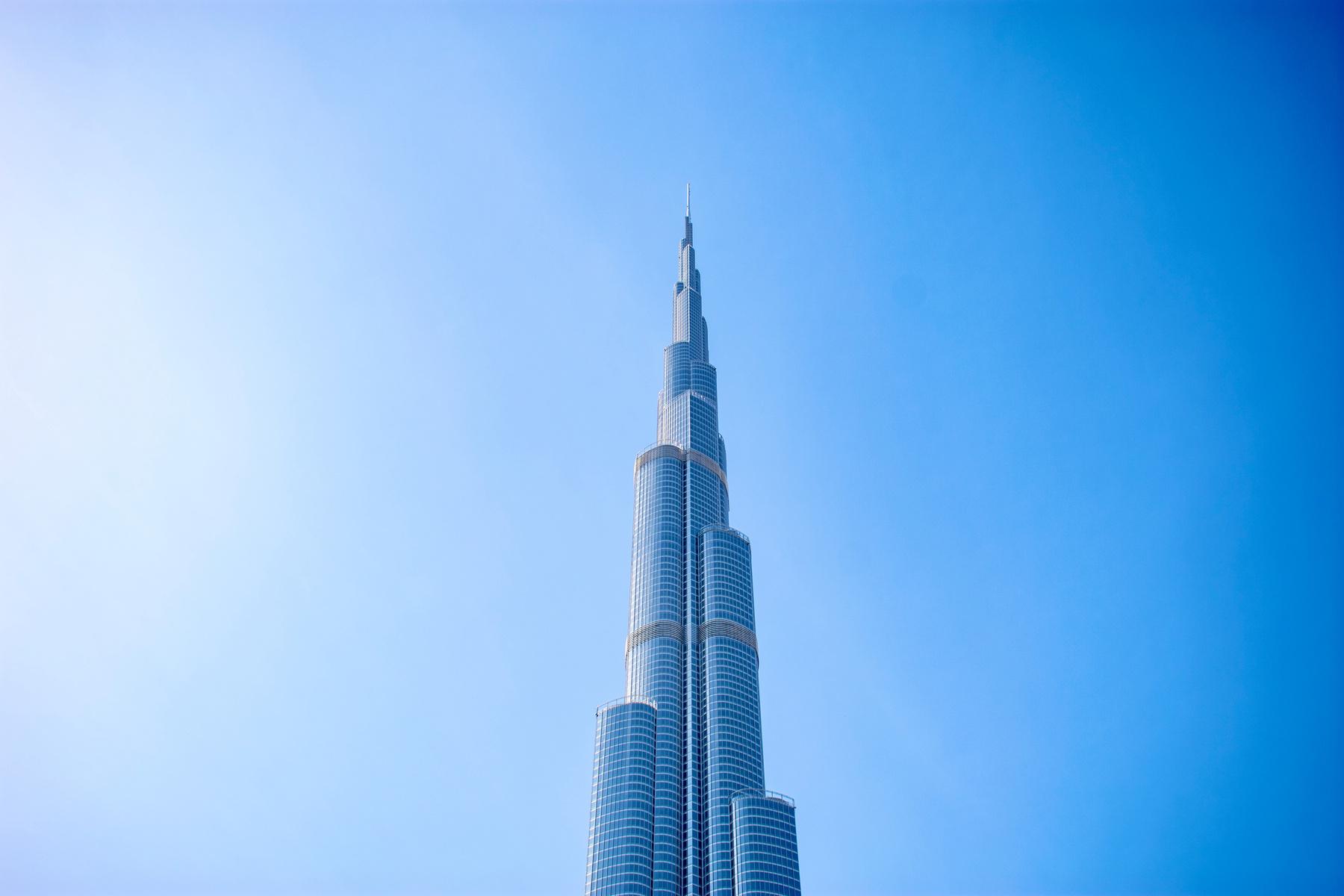





ANNUAL EDITION 2024 SOLARQUARTER EXPO SPECIAL ISSUE MIDDLEEAST Must Read The Middle East's Role in Global Renewable: A Closer Look at Solar Energy Contributions and Climate Action
more on Pg 32 More Inisghts on Pg 06
Read
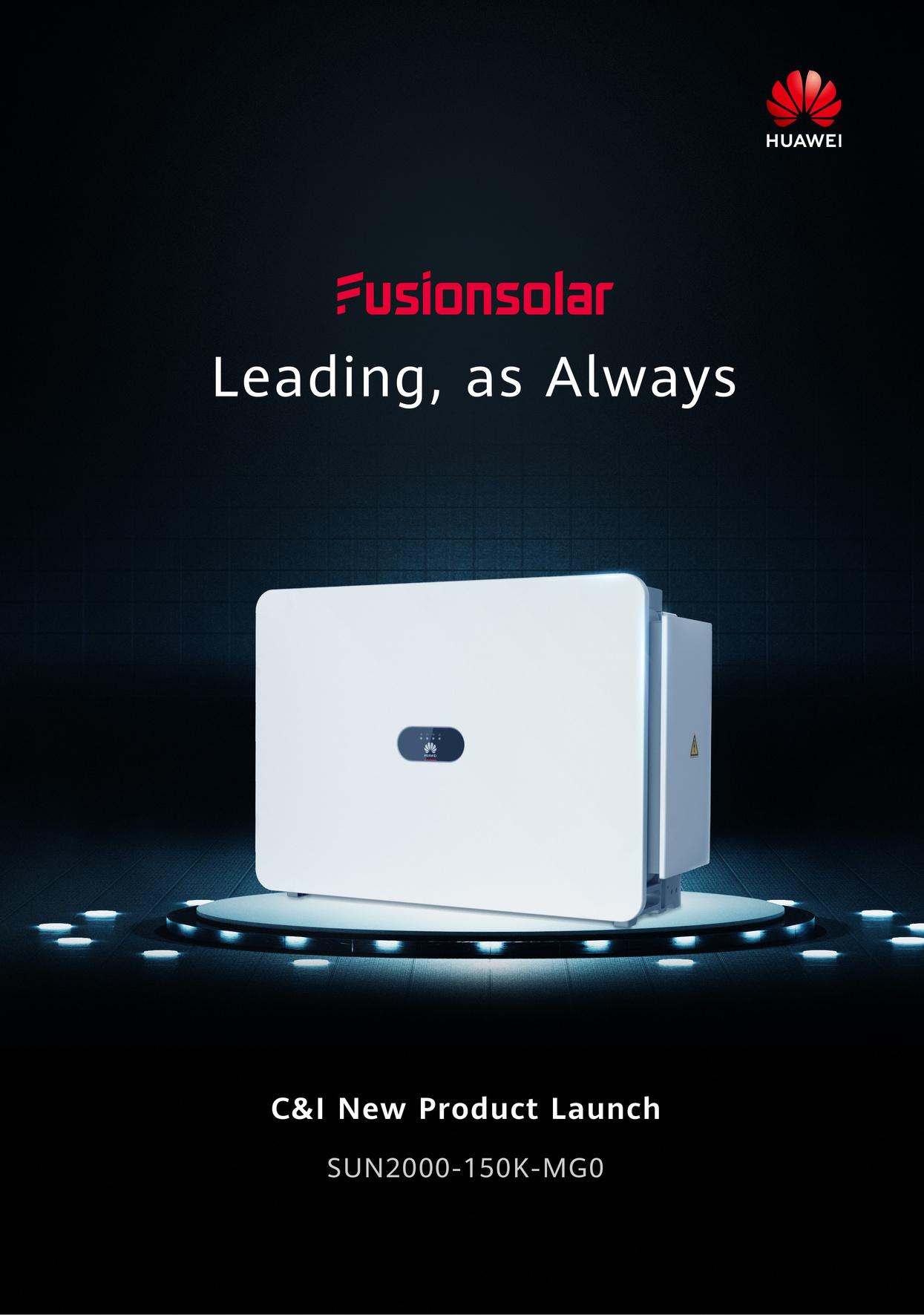

MiddleEast|AnnualEdition2024 03 WFESExpoSpecialIssue SOLARQUARTER
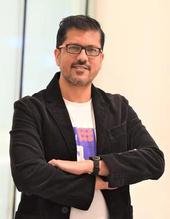

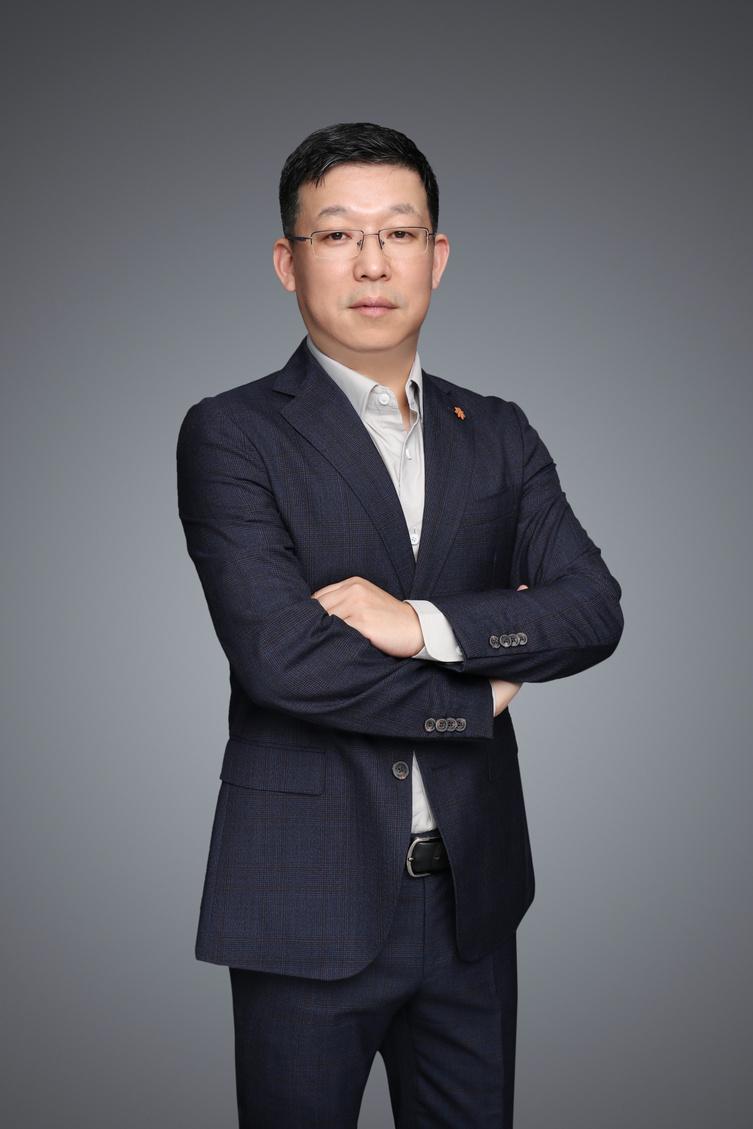


LONGi Sunpure LONGi pvmarket




EmpoweringTheSun:ExploringTheLandscapeOfSolarEnergyIn TheMiddleEast
ShiftingSands:ExploringSolarInvestmentTrendsAndFinancing ModelsInTheMiddleEast
InsightsintoMiddleEasternSolarEnergy:ComparativeAnalysis ofCapacity
DecipheringSolarPolicies:EvaluatingMiddleEasternNations' StrategiesinSolarEnergy
PoweringTheFuture:GridIntegrationAndStorageSolutionsFor Large-ScaleSolarProjectsInTheMiddleEast
UnveilingSolarInnovation:AdvancementsShapingtheMiddle East'sEnergyLandscape
ShiningLightOnLandmarkSolarProjects:ExploringTheImpact OfKeySolarInitiativesInTheMiddleEast
Astronergy ElumEnergy MEMR/JREEEF AJMS 14 08 16 30 06 17 34 38 40 42 15 27 24 32 26/35 FEATURED INTERVIEW IN CONVERSA PRODUCT LAUNCH COMPANY FEATURE RESEARCH INSIGHTS KNOWLEDGE BYTES RY FEATURED INSIGHTS 1 SinengElectric 1 2 TechnicalDirector –India,AsiaPacific &MiddleEast TBEA Sadhana Shenvekar Mohan Gupta editorial@firstviewgroup.com EDITING Firstview Media Ventures Pvt Ltd PUBLISHING Sadhana Shenvekar Mohan Gupta Avanti Deshpande publishing@firstviewgroup com CONTENT Neha Barangali Radha Buddhadev design@firstviewgroup.com DESIGNING Smriti Charan Andrew Ferreira advertise@firstviewgroup.com ADVERTISING Sadhana Shenvekar CIRCULATION SUBCRIPTION subscribe@firstviewgroup.com ADVERTISE WITH US
Smriti Charan
smriti@firstviewgroup.com
Contact:
e:

MiddleEast|AnnualEdition2024 05 WFESExpoSpecialIssue SOLARQUARTER
Empowering The Sun: Exploring The Landscape Of Solar Energy In The Middle East
In the heart of the Middle East, where oil has long reigned supreme, a new energy revolution is quietly taking shape. The region, blessed with an abundance of sunlight and vast expanses of desert terrain, is increasingly turning to solar power as a key driver of its energy transition From the shimmering sands of the Arabian Peninsula to the rocky landscapes of Jordan, solar panels are becoming ubiquitous, signaling a profound shift in the region's energy landscape and economic prospects.
For decades, the Middle East has been synonymous with oil, its vast reserves fueling economic growth and geopolitical dynamics around the world However, as the world grapples with the urgent need to combat climate change and reduce dependence on fossil fuels, countries in the region are recognizing the imperative to diversify their energy mix and embrace renewable sources
The United Arab Emirates (UAE) stands at the forefront of this solar revolution, with its visionary leadership and ambitious renewable energy targets The Mohammed bin Rashid Al Maktoum Solar Park in Dubai stands as a testament to the UAE's commitment to solar energy, aiming to generate 75% of its energy from clean sources by 2050 The park, one of the largest of its kind globally, embodies the country's bold vision and determination to harness the power of the sun.
Similarly, Saudi Arabia, the world's largest oil exporter, is making significant strides in solar energy development under its ambitious Vision 2030 agenda With plans to invest billions of dollars in renewable energy projects, including solar farms and wind parks, the kingdom aims to diversify its economy and reduce its carbon footprint The recently inaugurated Sakaka solar plant, with a capacity of 300 megawatts, represents a milestone in Saudi Arabia's renewable energy journey and underscores its commitment to sustainability
Across the region, countries like Jordan, Egypt, and Morocco are also embracing solar energy as a means to enhance energy security, create
jobs, and foster economic development In Jordan, the Shams Ma'an solar project, one of the largest in the Middle East, has been instrumental in reducing the country's reliance on imported energy and mitigating the impact of fluctuating oil prices

The rapid growth of solar energy in the Middle East is not only driven by environmental concerns but also by economic imperatives. With solar energy becoming increasingly competitive in terms of cost, countries in the region see it as a strategic opportunity to reduce subsidies on fossil fuels, create new employment opportunities, and attract foreign investment
Moreover, the plummeting costs of solar technology, coupled with advances in energy storage and grid integration, are making solar power more reliable and accessible than ever before This technological revolution is opening up new possibilities for off-grid solutions, decentralized energy systems, and community-owned solar projects, empowering individuals and communities to take control of their energy future
However, challenges remain on the path to realizing the full potential of solar energy in the Middle East Despite the region's abundant sunlight, issues such as grid infrastructure constraints, regulatory barriers, and financing limitations continue to hinder the scalability and sustainability of solar projects Moreover, geopolitical tensions and security concerns pose risks that could disrupt energy supplies and investment flows, highlighting the need for stability and cooperation in the region
In conclusion, the rise of solar energy in the Middle East represents a transformative opportunity to reshape the region's energy landscape and catalyze sustainable development. By harnessing the power of the sun, countries in the Middle East can reduce their dependence on fossil fuels, mitigate climate change, and unlock new economic opportunities for generations to come As the sun sets on the era of oil dominance, a new dawn is breaking one powered by the boundless energy of the sun
MiddleEast|AnnualEdition2024 06 WFESExpoSpecialIssue SOLARQUARTER
MIDDLE EAST|RESEARCH INSIGHTS

MiddleEast|AnnualEdition2024 07 WFESExpoSpecialIssue SOLARQUARTER
COMPANY FEATURE

Sunpure, Leading Full-Scene PV Intelligent Cleaning Robot and One-Stop Service Provider
The Middle East is set to become a market leader in renewable energy, especially in solar field Yet harsh environment and desert climate pose challenges for PV projects Vast deserts and various extreme climatic conditions are very likely to cause sand accumulation in the modules which will lead to soil loss. The range of soil loss could be incredibly wide even though you manually clean the PV module rather often
Why risk the loss of power generation when Sunpure is providing intelligent robotic cleaning solutions that could solve the problems?
Inherent advantages paired with customized solutions for the MENA
Sunpure’s intelligent PV cleaning solution holds distinct advantages in the MENA region:
It is water-free cleaning, a fully automatic intelligent cleaning solution to make sure waterless operation;
It is module friendly, and the cleaning brush can operate reliably whether in high or low temperatures, which is also anti-UV aging and can offer an effective solution to dust pollution;
The SmartPure Cloud Platform, offers intelligent, convenient, efficient, and secure methods to remote monitoring and management;
By significantly reducing operational costs, alleviating O&M pressures, and lowering the LCOE, it makes PV plants more profitable;
A local technical team in MENA region provides a response service commitment within 24 hours
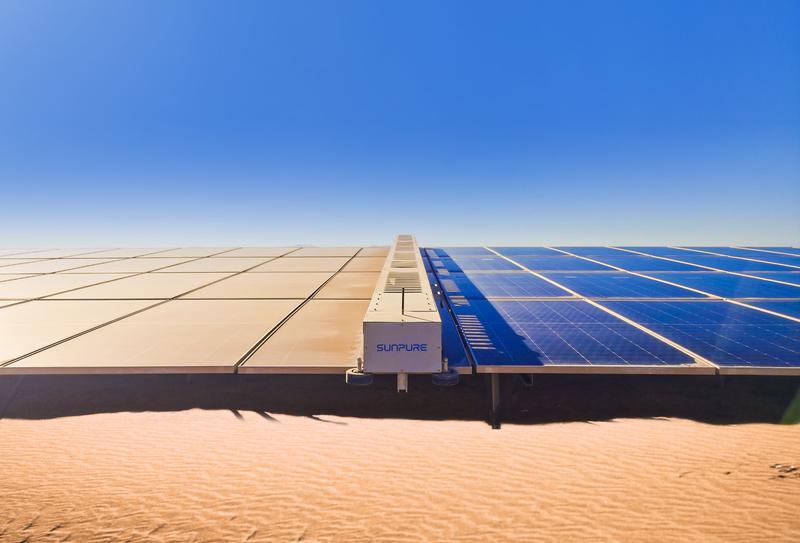

Sunpure attaches great importance to the MENA market and has successfully delivered its products at various locations such as Ar Rass in KSA, with a cumulative sighed contract of more than 9GW. It’s a great honor that Sunpure has become an indispensable supplier of PV cleaning robots in this market
For the next step, Sunpure will continue to engage the MENA market, accelerate the localization process, understand local demands, shorten the service response time and provide more cost-effective services to serve clients in the MENA region
AboutSunpure
SUNPURE is a high-tech innovative company specializing in R&D, manufacturing, sales and service of intelligent PV cleaning robots The product line covers PV railed robots, trackless cleaning robots and intelligent shuttles Sunpure is committed to providing one-stop intelligent PV cleaning services for a wide range of scenarios.
Sunpure insists on scientific innovation and investment in R&D, and all the products have undergone rigorous testing and received certifications from authoritative institutions. With a remarkable portfolio of over 180 filed and granted patents, company has earned more than 30 esteemed industry accolades
Sunpure takes customers' achievements as its mission The company has built a comprehensive global service system Our products have been successfully delivered to 14 countries and regions, including China, the Middle East, India, South America and more, with the total capacity of 13 GW
SunpurePVCleaningRobot
MiddleEast|AnnualEdition2024 08 WFESExpoSpecialIssue SOLARQUARTER

MiddleEast|AnnualEdition2024 09 WFESExpoSpecialIssue SOLARQUARTER
LONGi the Global Solar tech Giant - Leads the Charge Yet Again with Cutting-Edge Anti-Dust Product Launch

All praise to LONGI’s industry transforming move of adopting Back Contact Technology in it’s product range, LONGi's newly developed anti-dust panels represent a significant advancement in addressing the common issue of dust accumulation on solar panels This innovation is a testament to LONGi's commitment to integrating field experience into its product development, highlighting its position as a forward-thinking and strategic entity in the green energy sector By focusing on reducing the Levelized Cost of Electricity (LCOE), LONGi underscores its mission to enhance solar panel efficiency comprehensively The company's dedication to solar technology evolution is driven by the urgency to achieve carbon emission reductions rapidly The innovative design of these panels not only tackles the challenges posed by dust and water accumulation but also simplifies ongoing operations and maintenance (O&M) efforts, thereby safeguarding project key performance indicators (KPIs) against the detrimental impacts of environmental substances. Additionally, the design's effectiveness against snow accumulation further exemplifies LONGi's relentless pursuit of durable and efficient solar solutions, aimed at contributing to a sustainable future for succeeding generations.
WaseemHaider
Channel Sales Manager
LONGi Solar Technology Co. Ltd.
KEY HIGHLIGHTS
Cutting-Edge Solar Solutions: LONGi's Back Contact Technology Tackles Sedimentation & substance accumulation on the PV panels surface, with Anti-Dust Panels.
LONGi's dedication to R&D investment underscores their leadership in solar technology, leading to groundbreaking innovations like their game-changing anti-dust panels
LONGi meticulously implements its ESG policy, LIGHT, across its operations and product portfolio, exemplifying the company's unwavering commitment to sustainability
panels help cumulation on the nels and improve
Capitalising on efficiency levels achieved due to the back contact technology, Anti-dust panels are designed to enhance solar panel efficiency by mitigating water accumulation along the edges. Firstly, they achieve this by lowering the height of the base color and incorporating a minimal sliding angle, promoting water and dust to skid off the surface effortlessly Secondly, a strategically placed slit within the panel's frame serves as a drainage path, allowing water to flow downwards and away from the panel, further preventing accumulation and potential efficiency loss
LONGi's anti-dust panels, a marvel of innovation in solar technology, showcase the company's commitment to revolutionizing the industry. By addressing dust accumulation with Back Contact Technology, they pave the way for a cleaner, more efficient future in renewable energy.
What inspired LONGi to develop these anti-dust panels, and what sets them apart from conventional panel designs?
LONGi's commitment to innovation, is evident by their mission of testing various technologies to evolve the Solar Tech. Proof of it lies in adoption of the Back Contact technology By investing 5% of it’s annual revenue back in R&D, LONGI’s puts innovation as a cornerstone of its ESG policy encapsulated by the acronym LIGHT, where 'I' stands for Innovation, was the primary inspiration behind the development of these anti-dust panels This dedication to innovation is fueled by a process of continuous feedback collection, learning from the execution of strategies, and incorporating these lessons into their work for perpetual improvement
LONGi distinguishes itself through a technology-oriented approach, setting its products apart from traditional solar panel offerings This isn't LONGi's first departure from conventional practices; the company has a history of pioneering changes in the Solar Industry, LONGi led the solar industry's shift from polysilicon to monocrystalline technology by investing in research and development to make monocrystalline production more economical and efficient, ultimately revolutionizing the industry with its focus on superior efficiency
FEATURED INTERVIEW
MiddleEast|AnnualEdition2024 10 WFESExpoSpecialIssue SOLARQUARTER

Can you elaborate on the potential cost savings associated with using LONGi's anti-dust panels in terms of reduced maintenance and cleaning resources?
Utilizing LONGi's Back Contact Technology based anti-dust panels has resulted in a 6% additional power gain compared to standard modules, according to the company's R&D team This enhancement, along with the estimated savings in cleaning costs 'amounting to a third of the total project costs over its lifetime' highlights the significant financial benefits of these panels, owing to their design that reduces dust accumulation and water retention, thereby diminishing the need for frequent manual cleaning and maintenance.
LONGi's journey of innovation is marked by a relentless pursuit of excellence. From their pioneering adoption of Back Contact Technology to the development of anti-dust panels, they set the standard for pushing boundaries and redefining what's possible in solar technology.
HowdoesthelaunchoftheseantidustpanelsalignwithLONGi's commitmenttoinnovationand sustainabilityinthesolarenergy industry?
The introduction of LONGi's anti-dust panels, part of the HiMOX6 – Guardian series, exemplifies the company's adherence to its ESG policy, LIGHT, which stands for Lead, Innovate, Green, Harmonious, and Trustworthy This development showcases LONGi's leadership in the solar energy industry by pioneering the anti-dust design, highlighting their commitment to innovation through advanced mechanical engineering Furthermore, by enhancing the efficiency of solar panels, thereby generating more clean power, LONGi contributes to environmental sustainability The design's reduced need for water in cleaning operations aligns with water conservation goals, supporting harmonious interaction with the environment. Additionally, by preventing water accumulation and sedimentation, the panels' lifespan is extended, underlining LONGi's reliability and trustworthiness in product development Therefore, LONGI’s Back Contact Technology riden HiMOX6 panel variants, including AntiDust, are a testament of LONGI’s commitment to innovation and sustainability
Whatimpactdoyouforesee LONGi'santi-dustpanelshavingon theadoptionofsolarenergyin regionswithhighdustlevels,such astheMiddleEast?
Firstly, the impact of Back contact technology is global and transformational. Which does not restrict the application of Guardian series AntiDust variant to Middle East but a globally adoptable product Even in the regions, which are high on snow reception. So I won’t categorize it as a product for windy or dusty regions However, talking of Middle East only, the deployment of LONGi's anti-dust panels in regions with high dust levels, such as the Middle East, is anticipated to significantly influence the adoption of solar energy By reducing the Levelized Cost of Energy (LCOE), these panels make solar projects more financially attractive to investors This innovation is likely to draw foreign investment, capitalizing on the region's abundant solar irradiation Furthermore, it positions the Middle East towards becoming a self-sufficient green energy consumer and highlights its potential as a global clean energy exporter. The introduction of such advanced solar technologies in the Middle East underscores its emerging leadership in the global pursuit of a Net Zero landscape, making the region a pivotal player in sustainable energy development

FEATURED INTERVIEW
MiddleEast|AnnualEdition2024 11 WFESExpoSpecialIssue SOLARQUARTER
Advancing Solar Energy: Sineng Electric's Impact and Solutions in the MENA Region

TufailMadre
Business Development Director (MENA) Sineng Electric
KEY HIGHLIGHTS
Sineng Electric's solar PV inverters, seen in projects like Ar Rass solar plant, shape MENA's renewables
Sineng Electric tackles Middle East solar challenges with robust design, ensuring stability Innovations like 6.6MW turnkey stations boost reliability and efficiency in MENA projects.
What are notable project cases of Sineng Electric solar PV inverters in the MENA region?
Sineng's solar PV inverters have left a significant mark across the MENA region, with installations in countries like Saudi Arabia, Jordan, Sierra Leone, Mauritania, Gabon, and more, contributing significantly to the local renewable energy landscape
One of our notable projects is the Ar Rass solar power plant, where we provided 746MW of 1500V 6 25MW turnkey stations This project, aligned with Saudi Vision 2030, stands as one of the largest PV projects that has been tendered as part of Saudi Arabia's NREP. Our cutting-edge inverters played a pivotal role in optimizing energy generation, diversifying the country’s energy mix, and decarbonizing the local economy
What are common challenges faced in Middle East solar PV projects and how does Sineng Electric address them?
The solar PV projects in the Middle East usually encounter challenges such as dust and sandstorms, as well as extreme heat
To effectively deal with these challenges, Sineng underscores the importance of robust product design Our dedicated team consistently seeks technical innovations with a focus on enhancing the durability and reliability of our products For instance, the implementation of the advanced cooling system enables the product’s stable operation in wide temperature ranges, without derating at temperatures as high as 50 ℃ , thus ensuring efficiency and exceptional performance
How does Sineng Electric customize its solar PV inverter solutions for Middle East projects?
Sineng Electric recognizes the unique requirements and environmental conditions in the Middle East To address these specific needs, we offer customized solar PV inverter solutions tailored for projects in the region. Our inverters feature IP65 protection which ensures resilience against frequent sandstorms and harsh desert environments Furthermore, Sineng’s inverters operate efficiently from -30℃ to +60 ℃ , guaranteeing outstanding performance even in high temperatures
Can you discuss recent innovative features in Sineng Electric's solar PV inverters for Middle East projects?
Sineng continuously innovates its solar PV inverter solutions to meet the evolving needs of Middle East projects. Rigorous testing, including low voltage ride through (LVRT) and high voltage ride through (HVRT), guarantees exceptional reliability and safety Our latest offerings include the widely adopted 6 6MW mv turnkey station (EP-6600-HB-UD/10 35) and the next-generation central inverter for utilityscale applications, the 4.4MW central inverter (EP-4400-HB-UD) Both of the inveters boast a maximum efficiency of up to 99 02% and a DC/AC ratio of up to 1 8 They maximize system yields while significantly reducing Balance of System (BOS) costs Additionally, with key components at the front side, maintenance procedures are simplified, and current sensors for each DC input improve monitoring and control capabilities
What sets Sineng Electric apart from other solar PV inverter suppliers in terms of product quality and customer support in the MENA region?
Sineng has strived to deliver technical solutions which result in the lowest LCOE for PV power plants, and this is constantly proven by our top position in the domestic China market and especially the highly competitive Indian market for utility-scale projects We adapt our solutions to the market requirements. For example - local content support or variable turnkey MV station capacities This adaptability is driven by our highly qualified R&D team
Also, we maintain stringent quality control measures throughout our manufacturing process to guarantee the longevity of our inverters. Our local support teams and service centers across the MENA region provide timely assistance and technical expertise at every stage of the project lifecycle Recent expansion efforts, including the establishment of an office in Dubai, reflect our commitment to bolstering our presence and support infrastructure in the region.

IN CONVERSATION
MiddleEast|AnnualEdition2024 12 WFESExpoSpecialIssue SOLARQUARTER
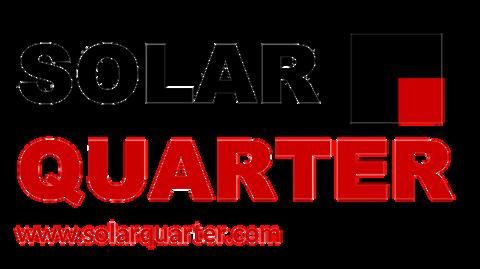
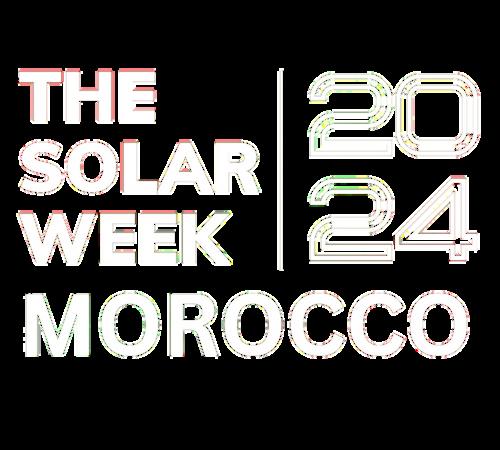






MENA UTILITY SOLARFORUM 2 0 2 4 DISTRIBUTED SOLAR DIALOGUE TRENDS & TECH |2024 ILLUMINATINGOPPORTUNITIES: HARNESSINGSOLARPOTENTIAL INMOROCCO ORGANIZED BY 2 80+ 10+ 20+ Engaging Sessions Attendees Expert Speakers Award Categories CASABLANCA, MOROCCO 09 MAY, 2024 SESSION PARTNERS CO-HOSTED EVENTS Get in touch: nikita@firstviewgroup com| +91 7718877515 Smriti@firstviewgroup com| +91 7718877514 Nomination are now open! ForAwards:pratika@firstviewgroup.com

LONGi Launches Revolutionary Hi-MO X6 Bifacial DualGlass Modules: Innovative Solution for High
Humidity and Heat Environments PRODUCT LAUNCH
LONGi, a global leader in solar technology, is delighted to unveil its groundbreaking Hi-MO X6 Bifacial Dual-Glass solar modules during the 19th China (Jinan) International Solar Energy Utilization Conference This cutting-edge product line, includesHi-MO X6 Explorer and Hi-MO X6 Guardian (Anti Humidity & Heat), which represents a significant leap forward in photovoltaic (PV) industry, especially designed for high temperature and high humidity environments
The Hi-MO X6 series is the culmination of LONGi’s relentless innovation in response to the evolving demands of the PV market. With over 40% of global regions classified as Damp Heat (DH) climates, the challenges for PV modules in these areas are substantial, ranging from leakage degradation to adhesive film yellowing and hydrolysis reactions The HiMO X6 Bifacial Dual-Glass modules are engineered to overcome these challenges, offering unparalleled reliability and performance in even the most demanding conditions
InnovationsforaSustainableFuture
The Hi-MO X6 Guardian model stands out for its exceptional resistance to humidity and heat, a critical advancement given the widespread need for durable and efficient solar solutions. LONGi's dedicated“AntiHumidity&HeatModule”projectteamhasbeenat theforefrontofthisinnovation,developingaseriesoftechnological advancementsthatinclude:
Free front-side busbar design optimizing the front side for higherenergyyield.
Customizedelectrodepastetosignificantlyenhanceresistance todegradationinhighhumidandheatenvironments.
A high water resistance sealant solution coupled with a highqualityadhesivefilmprocesstopreventwatervaporintrusion.


MeetingDiverseApplicationNeedswith HighPerformance
Designed for versatility, the Hi-MO X6 Bifacial Dual-Glass modules cater to a wide range of PV application scenarios, such as distributed roofs, PV carports, and winter gardens. Their bifacial design allows for efficient power generation by effectively utilizing light reflected to the rear side, providing additional power generation gains This makes the Hi-MO X6 series an ideal choice for locations requiring high weather resistance and safe, reliable operation.
SuperiorPerformanceandReliability
Compared to traditional TOPCOn and PERC modules, the Hi-MO X6 Guardian (Anti Humidity & Heat) showcases superior performance, including:
Only45%ofTOPCOn'sDHdegradation,ensuringlong-termstable returns.
Improved performance at high temperatures and low irradiation conditions.
Significantly lower degradation, ensuring stronger long-term powergeneration.
AboutLONGi
Established in 2000 with the vision of becoming the world's leading solar technology company, LONGi is committed to the utilization of solar energy for a greener world The company's focus spans five business sectors: mono silicon wafers, cells and modules, commercial & industrial distributed solar solutions, green energy solutions, and hydrogen equipment LONGi's dedication to green energy and green hydrogen products and solutions is a testament to its commitment to global zerocarbon development
MiddleEast|AnnualEdition2024 14 WFESExpoSpecialIssue SOLARQUARTER
KNOWLEDGE BYTES
Shining Light On Landmark Solar Projects: Exploring The Impact Of Key Solar Initiatives In The Middle East

The Middle East, with its vast deserts and abundant sunlight, is emerging as a global leader in solar energy deployment Governments across the region are investing heavily in solar initiatives to diversify their energy mix, reduce carbon emissions, and capitalize on the region's renewable energy potential. From ambitious solar parks to innovative research initiatives, the Middle East is spearheading transformative projects that are reshaping the energy landscape and driving sustainable development
One of the most notable solar projects in the Middle East is the Mohammed bin Rashid Al Maktoum Solar Park in Dubai, United Arab Emirates (UAE) Spanning over 4,500 hectares, the solar park is one of the largest single-site solar projects in the world With a planned capacity of 5,000 MW by 2030, the park is set to become a cornerstone of Dubai's renewable energy strategy, powering homes, businesses, and industries with clean and sustainable solar energy. The Mohammed bin Rashid Al Maktoum Solar Park exemplifies the UAE's commitment to transitioning towards a low-carbon economy and reducing its dependency on fossil fuels
In neighboring Saudi Arabia, the kingdom's Vision 2030 agenda has laid the groundwork for a massive expansion of renewable energy, including solar power The Sakaka solar project, the kingdom's first utility-scale solar plant, represents a significant milestone in Saudi Arabia's renewable energy journey With a capacity of 300 MW, the Sakaka solar plant is expected to generate clean electricity for thousands of households and businesses, while reducing the kingdom's reliance on oil and gas for power generation The project underscores Saudi Arabia's commitment to diversifying its energy portfolio and promoting sustainable development
Jordan, a country with limited natural resources and a growing population, has also emerged as a leader in solar energy deployment
The Shams Ma'an solar power plant, located in the Ma'an Governorate, is one of the largest solar projects in the Middle East. With a capacity of 52 5 MW, the Shams Ma'an solar plant contributes significantly to Jordan's renewable energy targets and enhances the country's energy security The project has created jobs, stimulated economic growth, and positioned Jordan as a regional leader in solar energy deployment
In addition to utility-scale solar projects, the Middle East is also witnessing a surge in rooftop solar installations, particularly in residential and commercial sectors Countries like the UAE, Qatar, and Oman are implementing policies and incentives to encourage the
adoption of rooftop solar systems, empowering individuals and businesses to generate their own clean energy and reduce electricity bills Rooftop solar initiatives not only promote energy independence and resilience but also contribute to mitigating climate change and reducing greenhouse gas emissions
Furthermore, the Middle East is investing in research and development initiatives to drive solar innovation and technology advancement
Academic institutions, research centers, and industry partners are collaborating to develop next-generation solar technologies, improve efficiency, and lower costs Innovations such as perovskite solar cells, bifacial modules, and solar tracking systems hold the potential to further accelerate the adoption of solar energy and enhance its competitiveness in the region.
Despite the significant progress made in solar deployment, challenges remain in realizing the full potential of solar energy in the Middle East. Grid integration, regulatory frameworks, financing mechanisms, and environmental considerations pose complex hurdles that require innovative solutions and concerted efforts from stakeholders across the region
In conclusion, landmark solar projects in the Middle East are paving the way for a sustainable energy future, driving economic growth, enhancing energy security, and mitigating environmental impact By harnessing the power of the sun, countries in the region are unlocking new opportunities for innovation, prosperity, and sustainability. As the Middle East continues to shine light on solar initiatives, the journey towards a renewable energy-powered future is well underway

MiddleEast|AnnualEdition2024 15 WFESExpoSpecialIssue SOLARQUARTER

LONGi Solar Set to Illuminate WFES 2024: A Glimpse Into The Future Of Solar Technology and Sustainability
In the realm of renewable energy, LONGi Green Energy Technology Co., Ltd stands as a beacon of innovation and sustainability Established in 2000, LONGi has swiftly risen to prominence, positioning itself as a global leader in solar technology
As the world gears up for the World Future Energy Summit (WFES) 2024, to be held at the Abu Dhabi National Exhibition Centre (ADNEC), anticipation is mounting for LONGi's participation This premier event, renowned for shaping the future of the energy sector, serves as the perfect platform for LONGi to showcase its groundbreaking solutions and visionary approach to sustainability
At WFES 2024, attendees can expect to witness firsthand the cuttingedge products and technologies that have cemented LONGi's reputation as an industry trailblazer Positioned at Stand 5140 in Hall 5, the LONGi booth promises an immersive experience, with it’s Slogan ‘Shaping the Future of Energy with Solar and Hydrogen’

In line with its vision for a zero-carbon future, LONGi will also showcase its innovative Green Power + Green Hydrogen solution at WFES 2024 By integrating solar energy with hydrogen production, LONGi aims to drive forward the transition to clean and sustainable energy systems, paving the way for a greener tomorrow

Central to LONGi's showcase at WFES is the unveiling of its flagship products, including the revolutionary Hi MO 7 solar Module Leveraging advanced N-type HPDC cell technology, the Hi MO 7 epitomizes efficiency and reliability, embodying LONGi's unwavering commitment to delivering high-value solutions to its customers
Moreover, visitors to the LONGi booth will have the opportunity to explore the groundbreaking N-type HBC Technology, which recently achieved a remarkable world record efficiency of 27 09% This remarkable feat, certified by the Institute for Solar Energy Research Hamelin (ISFH) in Germany, underscores LONGi's relentless pursuit of excellence in solar cell technology
Furthermore, attendees can gain valuable insights into LONGi's state-ofthe-art Lighthouse Factory, a testament to the company's commitment to sustainability and efficiency By optimizing manufacturing processes and reducing waste, LONGi continues to lead the charge towards a more sustainable future for the energy industry
As anticipation builds for WFES 2024, the energy sector is abuzz with excitement for the groundbreaking innovations that LONGi will unveil at the event. With its unwavering dedication to excellence and sustainability, LONGi is poised to leave an indelible mark on the global energy landscape, illuminating the path towards a brighter and greener future for all

MiddleEast|AnnualEdition2024 16 WFESExpoSpecialIssue SOLARQUARTER
COMPANY FEATURE
MIDDLE EAST|RESEARCH INSIGHTS
Shifting Sands: Exploring Solar Investment Trends And Financing Models In The Middle East
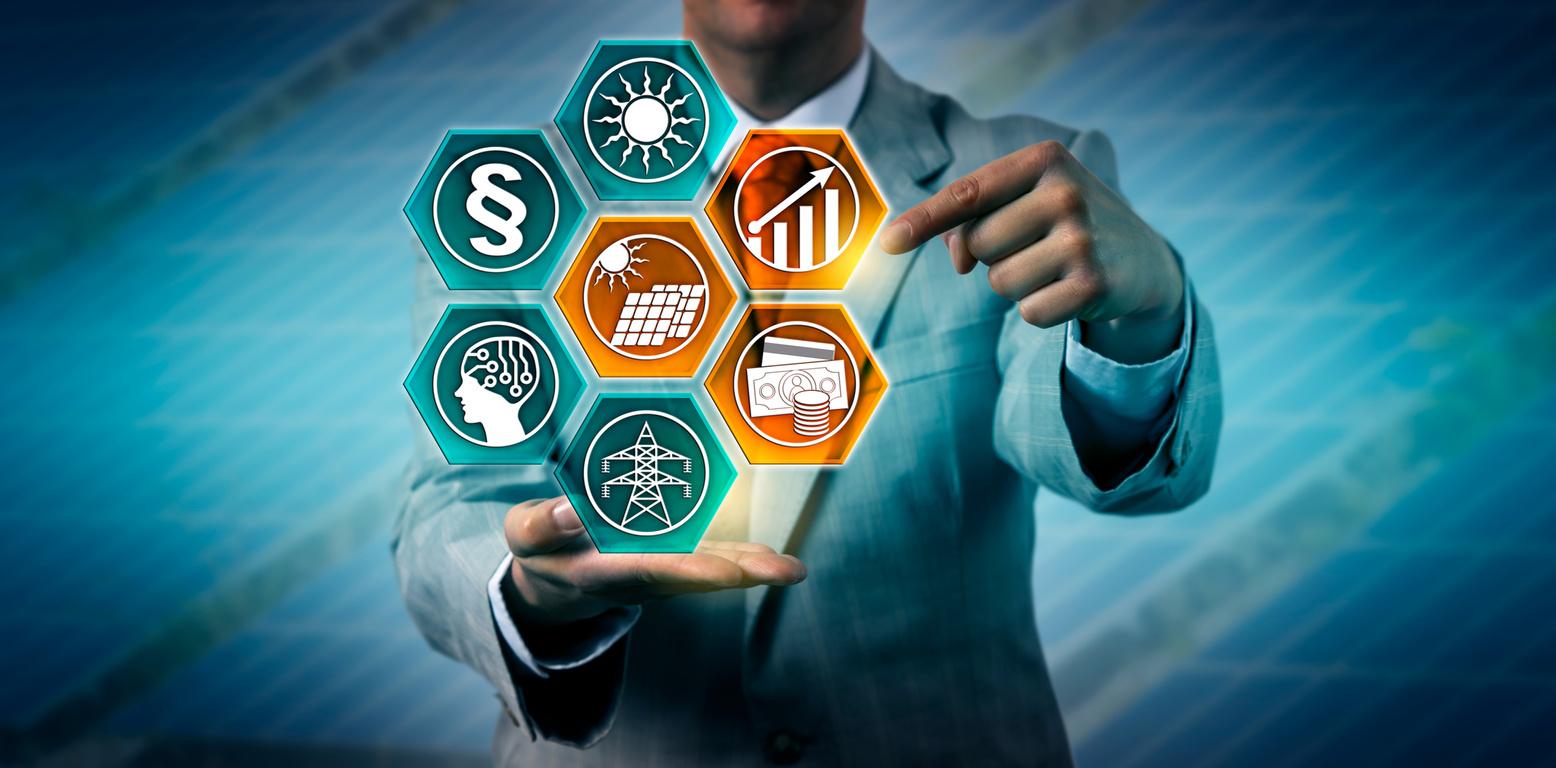
The Middle East, long synonymous with oil and gas riches, is witnessing a transformative shift towards renewable energy, particularly solar power With abundant sunlight and vast expanses of desert terrain, the region holds immense potential for solar energy development However, unlocking this potential requires substantial investment and innovative financing models to navigate the complexities of the energy transition.
In recent years, the Middle East has emerged as a hotbed for solar investment, driven by ambitious renewable energy targets, favorable regulatory frameworks, and declining costs of solar technology Governments across the region are actively promoting solar energy as a means to diversify their energy mix, reduce carbon emissions, and stimulate economic growth
One of the most notable trends in solar investment in the Middle East is the increasing involvement of international players and institutional investors Sovereign wealth funds, private equity firms, and multinational corporations are channeling significant capital into largescale solar projects, drawn by the region's vast solar resources and favorable investment climate
Moreover, strategic partnerships and joint ventures between local and international companies are becoming increasingly common, leveraging expertise, technology, and capital to accelerate solar deployment in the region These partnerships not only facilitate knowledge transfer and technology transfer but also enhance the scalability and sustainability of solar projects
In addition to traditional project finance, innovative financing models are playing a crucial role in mobilizing investment in solar energy projects in the Middle East One such model is the power purchase agreement (PPA), where developers secure long-term contracts to sell electricity generated from solar projects to utilities or corporate offtakers at a predetermined price. PPAs provide revenue certainty and mitigate risks for investors, making solar projects more attractive from a financing perspective
Furthermore, green bonds and sustainable finance mechanisms are gaining traction as tools to mobilize capital for renewable energy projects in the Middle East Governments, utilities, and financial institutions are issuing green bonds to fund solar and other clean energy initiatives, tapping into growing investor demand for environmentally sustainable investments
Islamic finance principles, which emphasize ethical and socially responsible investing, are also being integrated into solar financing models in the Middle East Sharia-compliant financing structures, such as sukuk (Islamic bonds) and Islamic project finance, are being used to fund renewable energy projects while adhering to Islamic finance principles
Despite the growing momentum in solar investment, challenges remain in attracting and mobilizing capital for solar projects in the Middle East.
Limited access to project financing, currency risks, regulatory uncertainties, and geopolitical tensions pose barriers to investment and project development
Moreover, the economic impact of the COVID-19 pandemic and fluctuations in global energy markets have added further complexity to the investment landscape, necessitating agility and resilience in financing strategies
To address these challenges, governments and stakeholders in the Middle East must continue to prioritize policy and regulatory reforms that create an enabling environment for solar investment Streamlining permitting processes, enhancing transparency, and providing incentives for renewable energy investments can help attract capital and drive sustainable growth in the solar sector
Furthermore, capacity building and knowledge sharing initiatives are essential to build local expertise and unlock the full potential of solar energy in the region Investing in research and development, workforce training, and technology innovation can enhance the competitiveness of the Middle East's solar industry and position it as a global leader in renewable energy
In conclusion, the Middle East's transition towards solar energy represents a paradigm shift in the region's energy landscape, with significant implications for economic development, energy security, and environmental sustainability. By embracing innovative financing models, fostering collaboration, and implementing supportive policies, the Middle East can harness the power of the sun to power its future growth and prosperity As the sands shift beneath the region's energy sector, the journey towards a solar-powered future in the Middle East is well underway
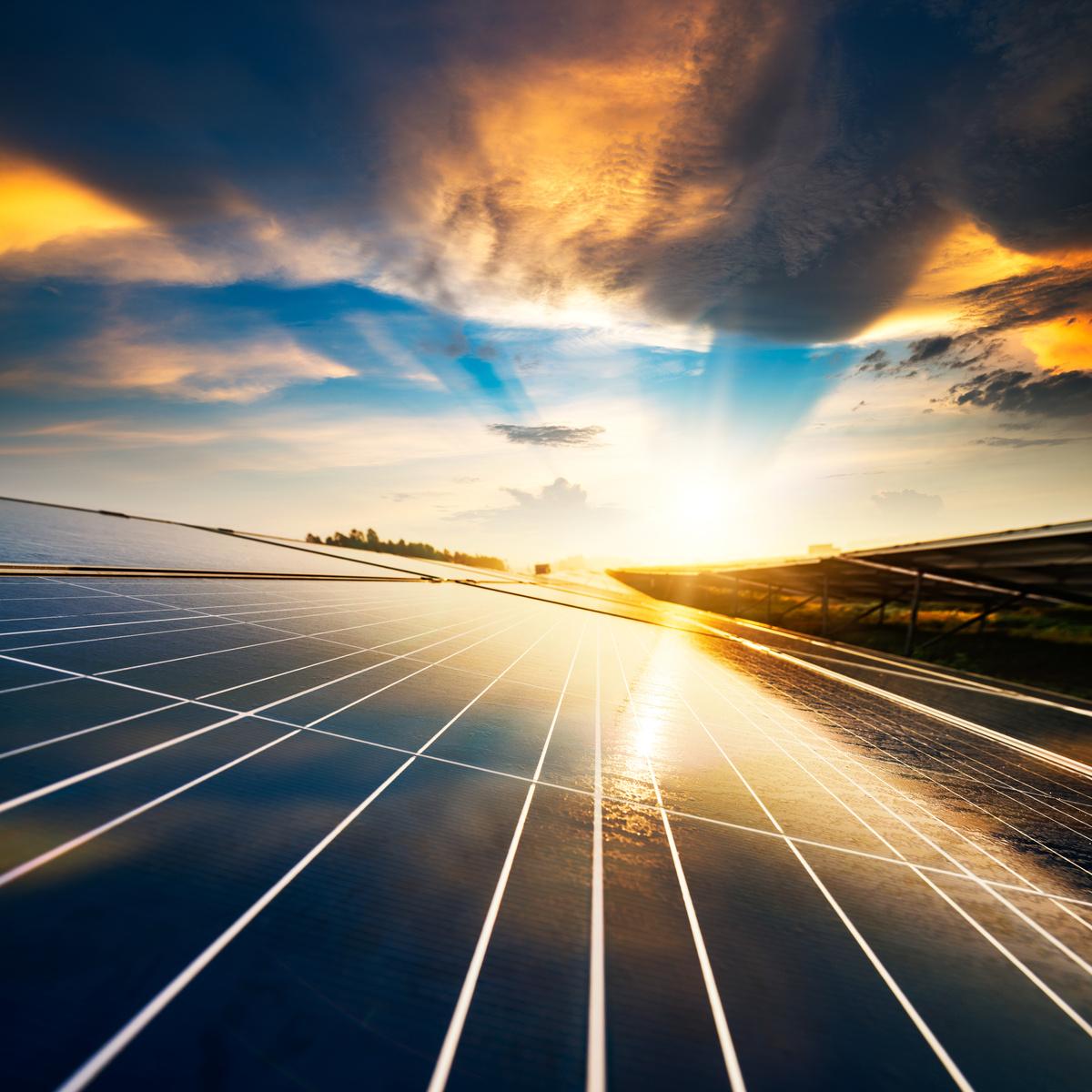
MiddleEast|AnnualEdition2024 17 WFESExpoSpecialIssue SOLARQUARTER
Shaping Solar Futures: Astronergy's Global Marketing Strategies
Unveiled

SamuelZhang
CMO Astronergy
KEY HIGHLIGHTS
Empowering the world with innovation, Astronergy's fourth-generation n-type TOPCon PV modules illuminate the path towards sustainable energy solutions
From tailored marketing strategies to strategic partnerships, Astronergy illuminates the MEA region's solar landscape with engagement and innovation
Astronergy's commitment to excellence and adaptability paves the way for a brighter, greener future in the MEA region and beyond
Can you provide readers with an insight into Astronergy's current global marketing strategies for its Solar Division?
As an intelligent manufacturer of solar cells and modules under CHINT Group, ASTRONERGY aims to be the most competitive module supplier worldwide and still striving to promote its business to all markets that require solar energy solutions
With businesses in over 140 countries now, Astronergy is firmly fulfilling its mission to create a sustainable and net-zero carbon world with solar power
As a pioneer in n-type TOPCon PV modules, we’ve been upgraded our n-type TOPCon technology to the fourth generation recently, and the R&D teams of Astronergy have been working to tap more potentials of the tech There will be the fifth, sixth and seventh generation TOPCon tech in Astronergy. Combining with frontier manufacturing processes, our solar products are produced to meet various demands in different application scenarios for adding more benefits for our customers.
Our mission is to create a sustainable and netzero carbon world with solar power. So, during the daily operation, we not only encourage customers to utilize solar product to enjoy greener energy; we are striving to do more efforts to shouldering social responsibilities for the world’s energy transition process.
Seeing the formation of our green supply chain and green management mechanism, we will upgrade 8 zero-carbon factories by 2028 and produce more zero-carbon products As a clean energy company, we’d like act as a good example to recall more green and sustainable actions for our world
How does Astronergy assess the current market dynamics for solar energy solutions specifically in the Middle East and Africa (MEA) region?
Through years of market involvement in MEA region, Astronergy has established deep connections with the market And we have formed a localized talent teams to promote our brand and products, and get information of every market-related moves in timely We also engage in partnerships or collaborations with industry insiders, local stakeholders to gain insights into market trends and customer needs
Could you share some of the specific marketing tactics Astronergy employs to effectively reach and engage customers in the MEA region?
Customer focus is one of Astronergy’s business philosophy. To easy our brand promotion and product promotion at markets, we formed professionals in the region to produce localized content for customers, and utilizing various tools to showcase Astronergy’s news and information in daily operation, such as social media content, seminar presentations
and discussion And we’ve been established good collaborations with local partners and distributors to refine our sales systems to reach customers effectively
Furthermore, by utilizing offline events on exchanging between industry insiders, promoting frontier solar techs and boosting energy transition process through collaborations, we’ve hoped to raise awareness about solar energy and discuss on paths for sustainable future, that would be great topics strongly related to our customers’ lives


FEATURED INTERVIEW
MiddleEast|AnnualEdition2024 18 WFESExpoSpecialIssue SOLARQUARTER

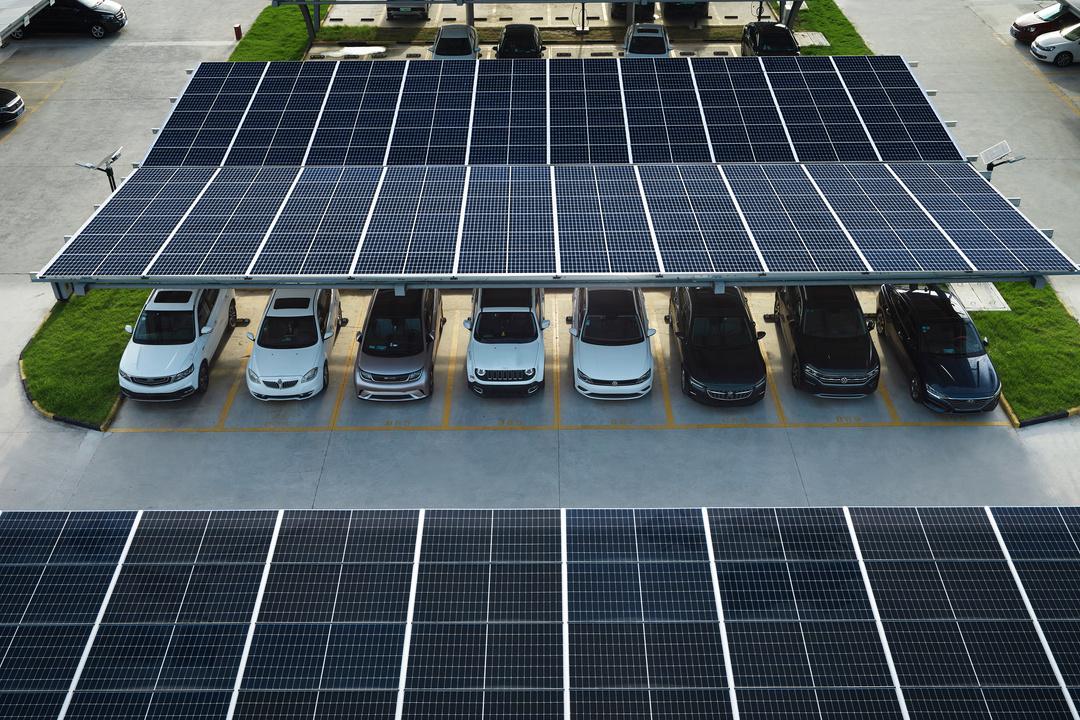
Astronergy is utilizing to expand its market share and meet growth targets within the diverse MEA market?
The MEA region is instrumental in our growth plan, as it is a region with healthy growth, ample resources, and a variety of projects under development We are targeting some 18% of our international sales to be shipped in the area and we are preparing ourselves to enhance our positioning and offering to the market
In a landscape characterized by high product availability, Astronergy's approach combines flexible solar solutions, professional service teams, a strong global presence, and financial strength, making us a secure and competitive option for businesses seeking a reliable m a c

policies and regulatory frameworks influence Astronergy's marketing approach in the MEA region?
In terms of policies and regulations from different markets, Astronergy has taken this into account when planning marketing strategies
To well aligned with the aggressive growth plans that are on track by many countries in the MEA, we’ve formed a goal to be a major supplier to the developers, utilities, IPPs and industrial players of the region by aligning our growth plans with the tremendous potential of the market
Policies in countries of the region are supports and flag for us to promote the better solutions and services for customers We’re focusing on
In a landscape characterized by high product availability, Astronergy's approach combines flexible solar solutions, professional service teams, a strong global presence, and financial strength, making us a secure and competitive option for businesses seeking a reliable module supplier.
What trends and developments do you anticipate in the MEA solar market, and how is Astronergy preparing its marketing strategies to remain adaptive and responsive to these changes?
MEA solar market is expected to see increased investment, and more policies supporting the industry’s fast growth. The 2030 World Expo in Saudi Arabia will be one of the great chances in near future to bring GW-level demands for solar power
T i d ti d i t

F
MiddleEast|AnnualEdition2024 19 WFESExpoSpecialIssue SOLARQUARTER

Driving the Green Revolution: Legal Strategies for Renewable Energy Success
TaniaJarjur
General Counsel
Yellow Door Energy
KEY HIGHLIGHTS
Emphasizing the need to reduce regulatory barriers and provide financial incentives for renewable energy adoption
Highlighting the critical role of reputable developers and tailored solutions in driving the renewable energy transition.
Underscoring the significance of advocacy from external law firms and influence from inhouse counsels in speeding up the Energy Transition and climate change mitigation
Please introduce yourself and your current role.
Tania Jarjur, General Counsel at Yellow Door Energy
As the head of the legal department, I am responsible for, and oversee, multiple legal verticals This includes projects (contracts related to customers, EPC, procurement), M&A, entering new markets, project finance, litigation and dispute management as well as reporting to the Board and Shareholders I also ensure the company complies with all the relevant regulations, such as anti-bribery and antimoney laundering, whistle blowing, and deepdive ‘know your customer’ due diligence work to ensure that the counterparties we work with don’t violate our policies
Yellow Door Energy operates in vastly different markets. Could you please give a brief overview of the countries’ different regulations regarding renewable energy adoption.
While each country has their own take on adopting renewable energy in the private sector, there is some overlap of principles of net metering, net billing and/or wheeling Netmetering allows customers to get credit for power they inject into the grid at the retail rate, while net billing allows customers to get credit at the wholesale rate Wheeling allows us to supply customers power from a plant outside the boundaries of their property by “wheeling” them power via the grid
UAE has the ambitious target of achieving Net Zero by 2050 There is net metering permitted in Dubai, although with a cap Other emirates allow net metering on a case-by-case basis, as well as self-consumption. This means the power we supply them does not go through the utility grid but rather directly to their factory/property We’re waiting to hear more about a federal law to unify all the Emirates’ regulations
Jordan allows for both net-metering and solar wheeling, but with strict caps on both South Africa permits net metering and solar wheeling, without a cap on either option
KSA allows for net billing and self-consumption, with caps on both as well
What advice would you give to government officials, those directly in charge of the countries’ renewable energy policies, in order to help their countries accelerate renewable energy adoption?
The key to accelerating renewable energy adoption is to reduce regulatory barriers as much as possible, allow open and transparent access to their power networks and enable the private sector to negotiate amongst themselves freely Lastly, providing financial incentives for renewable energy production will be instrumental in making it affordable for developers and consumers alike Incentives include sponsored grants for investing in renewable projects, tax incentives or
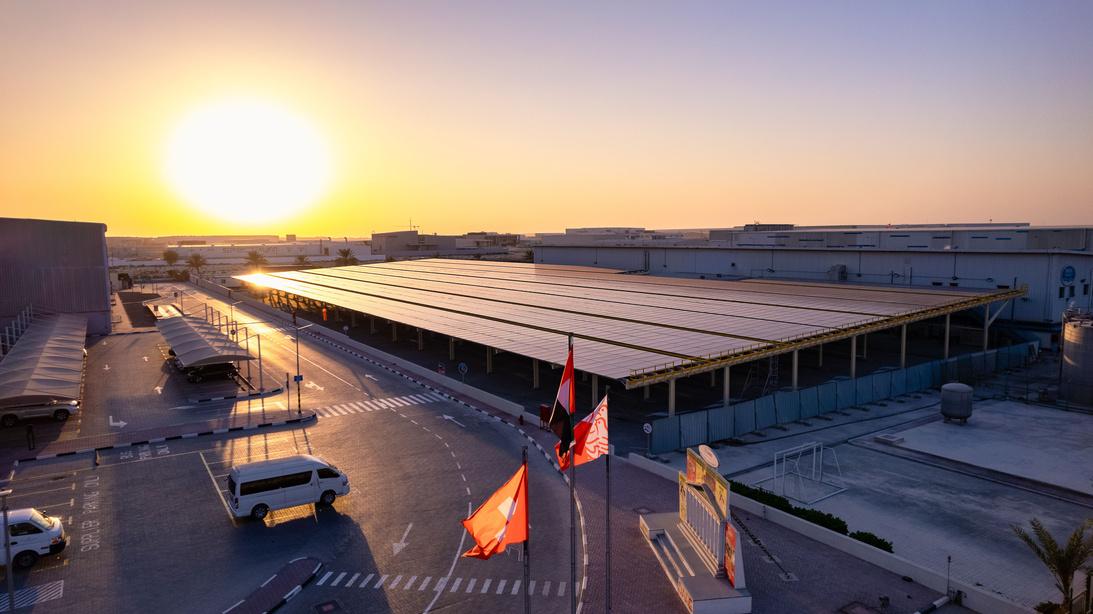
FEATURED INTERVIEW
Nestlé Waters Solar Carport | Developed by Yellow Door Energy | Capacity: 1.4 MWp |
Location: UAE | Photo Credit: Ghadir Shaar
MiddleEast|AnnualEdition2024 20 WFESExpoSpecialIssue SOLARQUARTER

It is important to always partner with a reputable developer, not just the cheapest option you can find, as these projects should be designed to last for 20 years or more. A reliable developer will also tailor the solution to help reduce overall consumption as well as providing clean, sustainable power.
The private sector plays a critical role in advancing the Energy Transition. What are the main opportunities for the private sector?
As consumers, there’s no better time than the present to start the renewable energy transition Immediate savings can be realized, and both short-term and long-term value can be created.
It is important to always partner with a reputable developer, not just the cheapest option you can find, as these projects should be designed to last for 20 years or more A reliable developer will also tailor the solution to help reduce overall consumption as well as providing clean, sustainable power
Through a solar lease / power purchase agreement (PPA), Yellow Door Energy supports 90 different customers, spread across 130 different project sites in 6 countries They range from multinational corporations to regional family-owned businesses. What unites them is their shared goal of decarbonizing their operations and simultaneously lowering their electricity costs The time to start is now!
Lastly, as General Counsel of Yellow Door Energy, what are some ways both in-house counsel and external law firms can do to speed up the Energy Transition and contribute to climate change adaptation and mitigation?

The typical focus is on external law firms in this transition, as they bring broad industry knowledge and legislation expertise to the table Law firms lead advocacy and regulatory changes with governments, structure green deals and hold companies and governments accountable through litigation However, inhouse counsels can use their deep knowledge of their business, industry and internal teams to push for change and implement action Being able to have real influence within their organizations gives in-house counsels a great platform to assess risks and opportunities for a Net Zero transition
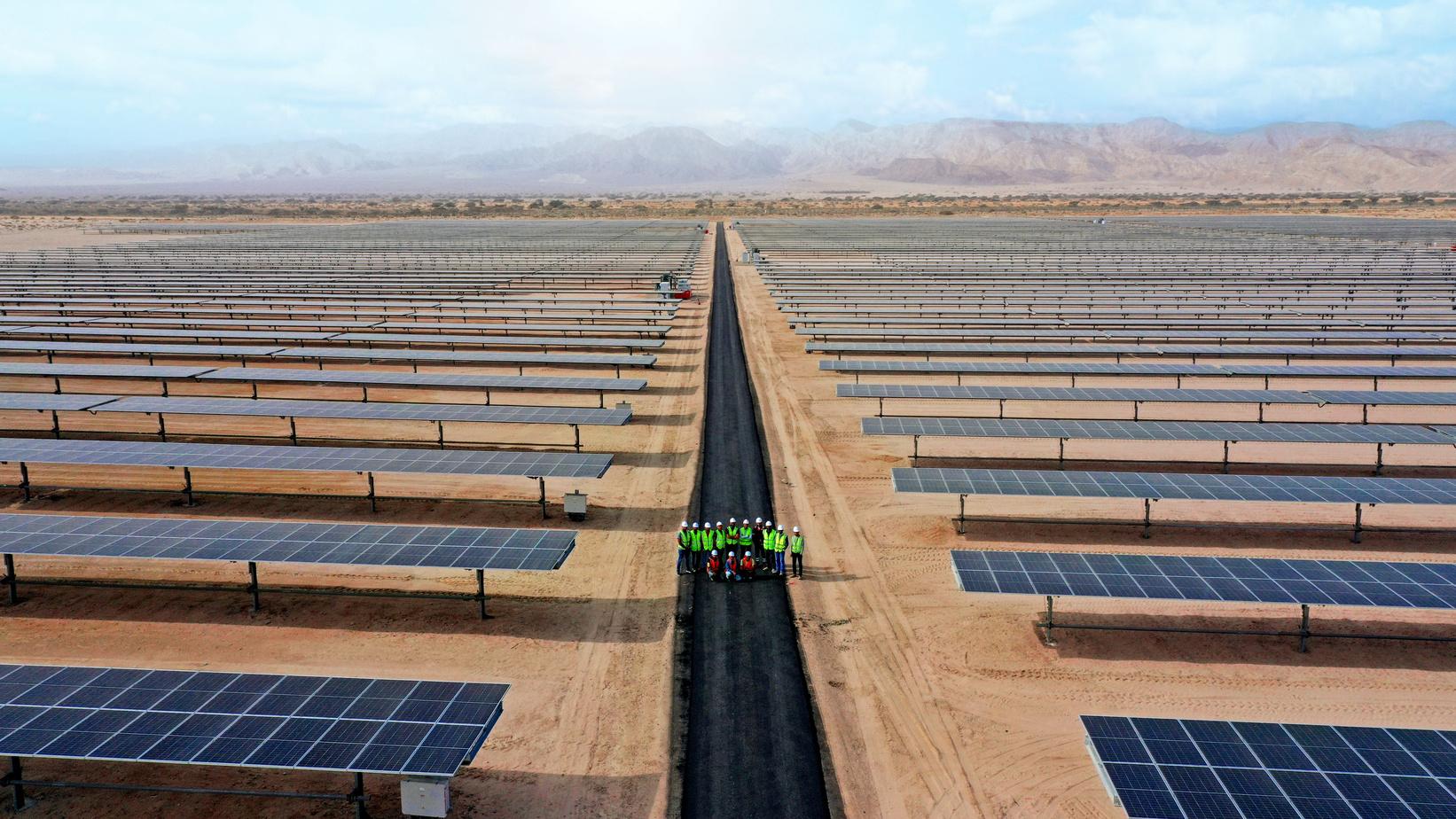
INTERVIEW
FEATURED
MiddleEast|AnnualEdition2024 21 WFESExpoSpecialIssue SOLARQUARTER
Solar Park for GID & ASEZA | Developer: Yellow Door Energy | Capacity: 24.3 MWp | Location: Jordan
Empowering Nations, Energizing Communities: Sterling & Wilson's Vision for the Middle East's Energy Independence

Can you give us an overview of Sterling & Wilson Renewable Energy Ltd's (SWREL) current presence and activities in the Middle East region?
Sterling and Wilson Renewable Energy Limited (SWREL) is a global pure-play, end-to-end renewable engineering, procurement, and construction (EPC) solutions provider Our key focus is to provide project design and engineering and to manage all aspects of project execution – from conceptualizing to commissioning. We also provide Operations & Maintenance (O&M) services for our own projects and those constructed by third parties
With a presence spanning 29 countries and a portfolio of more than 16 GWp capacity and O&M portfolio of 7GWp capacity, we are positioned to grow at a rapid pace Our longterm target encompasses a capacity addition of 2 GW every year, as we continue targeting large EPC markets and expand market coverage The Middle East region is one of our priority areas because it holds immense potential in terms of expansion of solar energy – both greenfield and brownfield A significant portion of our business comes from the Middle East region, wherein we are considered one of the market leaders
One of our landmark projects situated right here in the UAE - the Noor Abu Dhabi PV Project, retains immense value as the inaugural utility-scale project in Abu Dhabi, boasting a capacity of 1,177 MWp Further, there are various other projects we have undertaken in the Middle East region as we continue to keep up the momentum
Global CEO Sterling and Wilson Renewable Energy Limited AmitJain
KEY HIGHLIGHTS
SWREL leads globally in renewable EPC solutions, with a 16 GWp portfolio
Noor Abu Dhabi PV Project highlights SWREL's Middle East leadership
SWREL focuses on solar's potential, economic diversification, and tech innovation in the region
Whatarethemainfactorsdriving thegrowthofsolarenergyprojects intheMiddleEast,andhowis SWRELpositioningitselftotake advantageoftheseopportunities?
In the Middle East region, the renewable energy sector holds a lot of relevance, with countries clearly mandating the shift towards a greener solution to producing power. To help that, the renewable sector is highly competitive as well in this region with World Record Tariffs achieved and broken at various instances in time in this region The ambitious renewables targets and commitment to an energy transition path in this region have not only accelerated the tender timelines but also ramped up procurement efforts significantly
There are several other factors driving growth of solar energy projects across the Middle East region such as:
Abundant sunlight: The region enjoys high levels of solar irradiance, making it conducive for solar energy generation
Economic diversification: Many Middle Eastern countries are seeking to diversify their economies away from reliance on fossil fuels by investing in renewable energy sources like solar power
Energy security: Developing solar energy reduces dependence on imported fossil fuels, enhancing energy security for countries in the region
Environmental concerns: Growing awareness of environmental issues in the Middle East, including climate change and air pollution, is prompting governments and businesses to invest in cleaner energy sources like solar
Technological advancements: Advances in solar technology, including improvements in efficiency and cost reduction, are making solar energy more competitive with conventional forms of energy generation in the region
As one of the largest Solar EPC companies worldwide, SWREL has the expertise and experience to leverage these opportunities thereby maximizing growth We are pioneers in securing landmark deals such as Noor Abu Dhabi and Amin, Oman, showcasing our expertise and leadership in the renewable energy sector With our deep knowledge and understanding of the subject, we are wellpositioned to expand our operations in the Middle Eastern region and undertake more projects successfully

IN CONVERSATION
MiddleEast|AnnualEdition2024 22 WFESExpoSpecialIssue SOLARQUARTER
61MWpSolarPowerPlantinRisha,Jordan

1,177
Could you share some significant solar projects that SWREL has completed in the Middle East, along with the key challenges and successes encountered?
Few of our marquee projects in the Middle East includes:
The Noor Abu Dhabi Sweihan power project is a 1,177 MWp solar photovoltaic (PV) independent power project in Abu Dhabi, UAE
SWREL was the first Indian company to execute and commission a turnkey solar project - the 61MWp solar power plant in Risha, Jordan, during the time
The 2.6 MWp solar power plant in Madaba, Jordan is SWREL’s first international rooftop project
The Amin Solar PV Park Project, with an installed capacity of 125 MWp, is Oman's first renewables-based independent power project and was the world’s biggest single-unit solar park to use bifacial modules during the time of commissioning This is also one of the most prestigious projects for SWREL
Every project is different, and challenges differ based upon various parameters Few of our primary challenges are enduring harsh environmental conditions, meeting demanding project timelines, navigating fierce project competitiveness, and adapting to efficient and sustainable cleaning methodologies to ensure optimal operation and longevity of our projects However, overcoming these challenges and ensuring timely project completion with adherence to all quality and statutory parameters has been our sole objective and we strive to keep up to it
With the growing emphasis on sustainability and the transition to renewable energy in the Middle East what role do you envision SWREL playing in shaping the region's renewable energy landscape?
Renewable energy is increasingly being recognized as a key component of the energy transition in the Middle East, offering economic, environmental, and social benefits for the region's sustainable development.
The Middle East region, particularly countries like Saudi Arabia, UAE, Qatar and Oman boasts abundant sunlight, making solar power a key focus of renewable energy initiatives These countries are investing heavily in large-scale solar projects, including solar parks and utilityscale installations
As more countries in the Middle East transition from conventional power sources to renewables, SWREL, leveraging its vast experience and expertise, stands ready to adapt to each country's unique requirements We are committed to supporting these nations in their journey towards a greener and sustainable source of power, contributing to a cleaner and healthier environment for all
What are the main strategic priorities and expansion plans for SWREL in the Middle East region?
By 2026, the region is expected to add 33 GW by installed capacity of renewables, with around 26 GW as utility and distributed solar PV, according to a report published by Arab Petroleum Investments Corporation (APICORP)
We are certain that the robust reputation and goodwill earned over the years will ensure that our growth runs parallel or even higher to industry growth in the region
With the Middle East poised to add 33 GW of renewable capacity by 2026, SWREL is strategically positioned to grow alongside the region's burgeoning solar industry, further cementing our role as a key player in shaping its energy future.

125
IN CONVERSATION
MiddleEast|AnnualEdition2024 23 WFESExpoSpecialIssue SOLARQUARTER
MWpSolarPowerPlant,NoorAbuDhabi,UAE
MWpSolarPVParkinAmin,Oman
Featured Insights
Powering Progress: Trends and Challenges in Solar and Storage Market Growth Across the Middle East
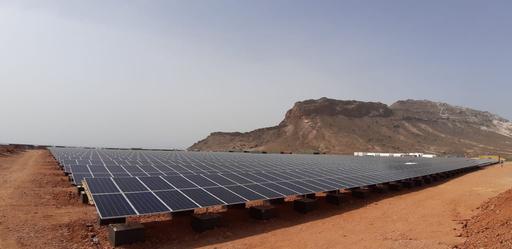
Amidst a fossil fuel-dominated energy landscape, there's a rising interest in solar power and storage solutions. Governments in the region are pivoting towards renewables to diversify their energy mix and meet sustainability goals However, while the potential for solar energy is abundant, there are some hurdles to overcome ranging from geopolitical tensions and technical complexities that can disrupt investment and hinder the growth of solar and storage markets in regions.
The declining costs of solar photovoltaic technology have sparked a surge in installations across the region Leading countries like the UAE, Saudi Arabia, and Jordan are embarking on ambitious solar projects, driven by abundant solar potential and renewable energy commitments. For instance, Saudi Arabia is set to develop over 18 solar plants with a combined capacity exceeding 9 GW (Source: Eninrac Market Research Report, 2023), while the UAE plans to launch 10 solar plants with a total capacity of about 5 2 GW
In countries like Yemen and Lebanon, lesser-known initiatives contribute to the trend towards embracing solar + storage solutions, marking a shift away from solar + diesel. While these countries may not lead the renewable energy movement, their strides towards comprehensive solar integration are significant in shaping the evolving landscape of energy solutions Previously, solar-diesel hybrid systems were prevalent in installations to tackle grid instability For example, in Lebanon, where

frequent 4-hour power outages were a concern, we implemented a system to address these challenges Similarly, one of our more recent projects in Palestine reflects a move towards a more inclusive integration of solar, diesel, and battery systems aimed at enhancing resilience against power interruptions
Diversification away from fossil fuels enhances energy security, reducing vulnerability to oil price fluctuations Governments incentivize private sector participation through regulatory frameworks and investment incentives to accelerate renewable energy deployment and innovation as a strategic economic endeavor
Moreover, the integration of solar power into the existing energy infrastructure poses technical challenges, particularly concerning grid stability and reliability Solar energy generation is inherently intermittent, fluctuating with weather conditions and daylight hours Effective grid integration requires sophisticated energy management systems and infrastructure upgrades to balance supply and demand in real-time Implementing control solutions alongside energy storage systems enables more efficient management of energy flow, thereby enhancing grid stability These control solutions allow for better integration of renewable energy sources into the existing grid infrastructure, reducing fluctuations and improving overall reliability
To address some of the challenges in energy management, Elum Energy has successfully implemented several projects in Yemen, Lebanon, Palestine, and the UAE, utilizing our hybrid fuel-saver controller However, as the region transitions towards greater energy independence, we are witnessing an increasing integration of our energy storage solutions.
Despite these challenges, ambitious renewable energy targets have been set across the Middle East. With the rapid expansion of solar projects in the region, utility-scale initiatives are already in progress, signalling significant solar growth

MiddleEast|AnnualEdition2024 24 WFESExpoSpecialIssue SOLARQUARTER
credit - PPC project in Yemen, Elum Energy, 2024
credit - Olive oil factory in Palestine, Elum Energy, 2022
NaveenKumar Redefining Solar Power with TC4400KF-B1 Inverter & ITS Solution

What innovations boost solar energy in the TC4400KF-B1 Central Inverter and 8.8MVA, 4.4MVA ITS solution?
TC4400KF-B1 is one of highest Inverter rating available in market with peak power reaching 5280kW @25 Deg C, below are innovative features which will contribute in higher reliable operation & generation
Product designed with rated output power of 4400kW at 51 deg C looking at the Middle East harsh environmental conditions.
Capable of delivering 120% AC Output at 25 deg C I,e 5280kW @Unity PF
Multi MPPT design with 3 MPPT, leads higher generation
Optimized cooling , smart and partition cooling will improve the cooling efficiency and reduce aux losses in Inverter
One of highest power density Inverter available in market which saves considerable BOS
Modular Design enhance the uptime of the product
Available in plug & play ITS solution with 4 4MVA & 8 8MVA capacities
Pre-assembled Central solutions at factory TC4400KT-EL & TC8800KT-EL includes Inverter, IDT & RMU unit
Redundancy with modular design with ease of O&M
How does TBEA maintain TC4400KF B1 ITS solution to meet Middle East solar industry standards?
TBEA TC4400KF-B1 meet market demand for following regions as:-
In Middle East projects sizes are very huge where plug & play ITS solution can be the best choice in terms of ease of O&M, Fast Installation, Easy transportation, one stop solution
8 8MVA ITS comes in 40 feet Standard Container & 4.4MVA in 20 feet container.
DC Inputs flexibility from 18 nos as standard & can be extended to 24 nos Looking at the
Technical Director – India, Asia Pacific & Middle East TBEA
KEY HIGHLIGHTS
Peak Power: TC4400KF-B1 achieves 5280kW @25°C, ensuring top performance in harsh climates
Efficiency Boost: Innovative features like multi-MPPT and optimized cooling enhance energy generation
Seamless Integration: Modular design and plug & play ITS solution simplify installation and maintenance for developers
market dynamics & module technology
shifting to higher watt peak we are utilising
Multi MPPT technology to . This product can be utilized for any module technology having an edge for suitability for different permutation & combination
DC loading can meets the market requirements without any impact on product performance
Features like Multi MPPT, Modular design is very important for Middle East harsh environment & also big size power plants to maintain uptime & enhance performance. This product is developed based on the intensive research on global market requirement & used latest technology which can meet the different environmental conditions, grid code, better safety features, stable & reliable operation, ease of O&M
Latest version of utility scale Central Inverter which is more protected.
Suitable for higher PV block size will help for LCOE
What benefits does the TC4400KFB1 ITS solution and TSVG offer to solar project developers?
Following benefits developers can get as:-
Higher efficiency – enhance energy generation
Higher generation
Multi MPPT - Lower mismatch losses.
Easy O&M
Compatible with different module technology
Designed to bring better LCOE
Single product can meet different grid code requirement
Tested & proven technology using tier 1 components
How does TC4400KF-B1 compare to other solar inverters in efficiency and performance?
Since TC4400KF-B1 based ITS solution is highest power rating Inverter available in
market by using this Inverter developers have more power which leads for higher generation and LCOE can be achieved earlier and It is having peak efficiency of 99% and euro efficiency is 98.7 % , this Inverter is designed with optimum cooling design & Two separate air flow channels design one high heat generating components & second for rest of components So It is having higher thermal stability for market like Middle East where temperature is hitting near to 50 deg C, we have extended the output temp range to 62 C which was 2 degree more than earlier 60C, In fact at 25 deg C temperature this product can deliver 120% AC output, so all these points make Inverter efficient and best performer.
How does TBEA address solar project challenges, and how do TC4400KF-B1 ITS and TSVG help?
Adopting latest technology available in market
Suitable for weak grids also where SCR is up to 1
Increasing the power capacity of Inverter and SVG to match market demand
Updating of existing products and finetuning its features to mitigate the challenges faced in Grid due to high penetration of RE assets.
Product design extended to surpass or meet grid code requirement & market requirements
Proactive approach based on rich global experience of TBEA helps & supports Solar project developers to complete projects on time maintaining high standards of quality. Training facilities for site team and well diversified service network
Availability of complete range of products suitable to meet utility scale market.
Continuous Interfacing with Grid agency/Government operator to meet grid requirement
FEATURED INTERVIEW
MiddleEast|AnnualEdition2024 25 WFESExpoSpecialIssue SOLARQUARTER
Featured Insights
Analysis of ESG in the Middle East

ESG practices in the Middle East play a crucial role in shaping sustainable development in the region. Although progress varies among countries, there is a growing awareness of the importance of ESG factors
In Saudi Arabia, the Vision 2030 initiative emphasizes sustainability and diversification, driving ESG efforts in the Kingdom
The United Arab Emirates has also made strides in promoting ESG practices, with initiatives like the Dubai Sustainable Finance Working Group focusing on sustainable investments
Qatar's ESG landscape is evolving, with the Qatar Financial Centre promoting ESG integration in the country's financial sector
Overall, the Middle East is increasingly recognizing the significance of ESG principles in fostering long-term growth and resilience
ESG considerations in the Middle East present a complex landscape with varying levels of progress and challenges across the region
Countries in the Middle East face environmental challenges such as water scarcity, air pollution, and climate change
Some nations, like the UAE and Saudi Arabia, have made significa investments in renewable energy and sustainable practices reduce their carbon footprint
However, the region's heavy reliance on fossil fuels poses a maj environmental risk, requiring a shift towards cleaner and mo sustainable energy sources
Social issues like labor rights, gender equality, and human righ pose challenges for companies operating in the region
Efforts to promote social responsibility and inclusivity are gainin traction, but there is still room for improvement in areas like diversi and employee well-being
Initiatives to support local communities, invest in education and healthcare, and empower marginalized groups are crucial for social development in the Middle East

Governance practices in the Middle East vary widely, with some countries demonstrating strong regulatory frameworks and transparency, while others face governance challenges
Corruption remains a concern in some nations, impacting business ethics and overall trust in the system
Improving governance standards, enhancing transparency, and strengthening regulatory oversight are essential for building investor confidence and sustainable economic growth
The Middle East offers diverse investment opportunities in sectors like renewable energy, technology, and healthcare, aligning with ESG principles
Sustainable finance instruments, such as green bonds and ESG funds, are gaining popularity in the region as investors seek socially responsible investment options
Collaboration between governments, businesses, and investors is key to unlocking the full potential of ESG-driven opportunities in the Middle East

ng made in integrating ESG considerations olicy frameworks in the Middle East, there is phasis on environmental protection, social ernance to ensure sustainable and inclusive n
MiddleEast|AnnualEdition2024 26 WFESExpoSpecialIssue SOLARQUARTER
Social Responsibility:
analysisofESGfactorsintheMiddle East 1. 2.
SeniorAdvisor AJMSGlobal
Environmental Impact:
Governance Practices: Governance Practices: An
3. 4.
NAT VORA
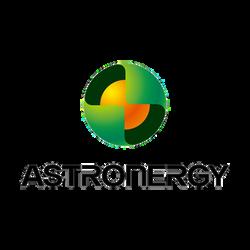
World’s First 43MW Mass-Production ASTRO N7s ZBB-TF n-type TOPCon Products Delivered to European Market COMPANY SUCCESS
After two months of process optimization and the introduction of TOPCon 4 0 PV cell tech, the first batch of 43MW ASTRO N7s ZBB-TF products in the PV industry was mass-produced from Astronergy product lines and delivered to distributors in the European market, highlighting the company’s n-type PV cell tech strengths and mature ZBB (Zero BusBar Interconnection Technology) and TF (Tiling Film) manufacturing process
Specially designed for distributed generation and residential markets worldwide, the ASTRO N7s ZBB-TF n-type TOPCon PV module has the top average conversion efficiency of over 23% among mainstream distributed generation & residential products and has obtained TÜV Rheinland’s world’s first certification for such kind
Certified by the IEC test, ASTRO N7s product has excellent anti-PID characteristics. And due to its low-stress encapsulation characteristics, it also performs well in anti-micro cracks of PV cells in different application scenarios
Seeing the mass production and delivery of the first 43MW ASTRO N7s products, Astronergy hit another first in the industry to finish the marketization of such frontier products
Through the mature ZBB-TF tech, fine-line silver fingers are printed on n-type TOPCon cells and narrow soldering copper ribbons are used at ASTRO N7s modules With this new design and interconnection
process, the internal carrier collection capability of the N7s cells is improved, the module efficiency and power of N7s are boosted, and the solar module appearance is in high aesthetics
During the manufacturing of ASTRO N7s products, all processes are conducted under lower temperatures and lower stress, which are compatible with thinner silicon wafers, thereby helping reduce over 20% silver paste consumption, and cutting carbon emissions caused by module product manufacturing
Meanwhile, the introduction of frontier techs of low-corrosion paste, LIF and POML, enabled TOPCon 4 0 solar cell of Astronergy to increase 0 3%-0 4% photoelectric conversion efficiency, which further increases the power generation capacity of the module and brings more value to customers.
As a pioneer in n-type TOPCon PV modules, it takes much less than three years for Astronergy to design and develop various n-type solar products for each possible application scenario, which significantly highlights its market-oriented consciousness against the backdrop that solar products are needed by more customers in different scenes
Eyeing on the markets worldwide, n-type solar products are becoming the mainstream The abundant n-type tech strengths will certainly consolidate Astronergy's position as a key player in shaping the future of solar power generation.

With an average conversion efficiency exceeding 23%, the ASTRO N7s ZBB-TF sets a new standard for distributed generation & residential solar products, earning recognition from TÜV Rheinland as the world's first of its kind.
STORY
MiddleEast|AnnualEdition2024 27 WFESExpoSpecialIssue SOLARQUARTER

Empowering Sustainability: ENGIE's Visionary Approach to Distributed Solar Solutions in the Middle East
PierreCheyron
Managing Director Africa, Middle East and Asia ENGIE Energy Solutions
KEY HIGHLIGHTS
ENGIE's focus on utility-scale and distributed solar solutions in the Middle East aims to reduce carbon footprints, lower energy costs, and enhance energy security
Leveraging the region's solar potential and supportive regulations, ENGIE offers turnkey solutions, including design, installation, financing, and maintenance, facilitating clean energy adoption
Facing challenges like technical complexities and upfront costs, ENGIE deploys innovative technologies and advocates for supportive policies to drive widespread adoption of solar solutions
Would you please provide readers with a comprehensive overview of ENGIE's Energy Solutions division and its strategic emphasis on distributed solar solutions within the Middle East region?
ENGIE is a global leader in providing lowcarbon energy and services to customers across various sectors, such as industry, commercial, and public We focus on three main areas: onsite energy production, local energy networks and energy efficiency
Within the Middle East region, ENGIE has a strategic emphasis on utility-scale solar and distributed solar solutions, which are on-site solar photovoltaic (PV) systems that generate electricity for self-consumption or export to the grid For the distributed solar projects, we offer turnkey solutions, including design, installation, operations, and maintenance, as well as financing options through corporate power purchase agreements (PPAs).
Ultimately, ENGIE aims to help its customers in the Middle East reduce their carbon footprint, lower their energy costs, and enhance their energy security by adopting distributed solar solutions
What specific characteristics or unique dynamics does ENGIE identify in the Middle East market that influence its approach to implementing distributed solar solutions?
The Middle East region possesses immense solar potential; it lies in the so-called Global Sunbelt and boasts some of the highest solar irradiances in the world This vast solar resource guarantees some of the world's lowest solar energy production costs Experts contend that covering just 1% of the GCC's surface area with PV could create almost 470 gigawatts (GW) of additional power generation capacity. This makes distributed solar solutions an attractive and viable option for energy generation
Secondly, the Middle East is experiencing rapid population growth, urbanization, and economic development, which result in increasing energy demand and consumption. Distributed solar solutions can help meet this demand by providing clean and reliable electricity, especially during peak hours
change, environmental degradation, and energy security Distributed solar solutions can help diversify the energy mix, reduce dependence on oil and gas, and contribute to the national and regional goals of decarbonization and sustainability The region is also increasingly supportive of solar from a regulatory point of view Several countries have introduced policies and incentives to encourage and facilitate the adoption of distributed solar solutions, such as feed-in tariffs, net metering, green certificates, and tax exemptions
ENGIE leads the charge towards sustainability in the Middle East, offering solar solutions to cut carbon footprints.
What are the primary challenges
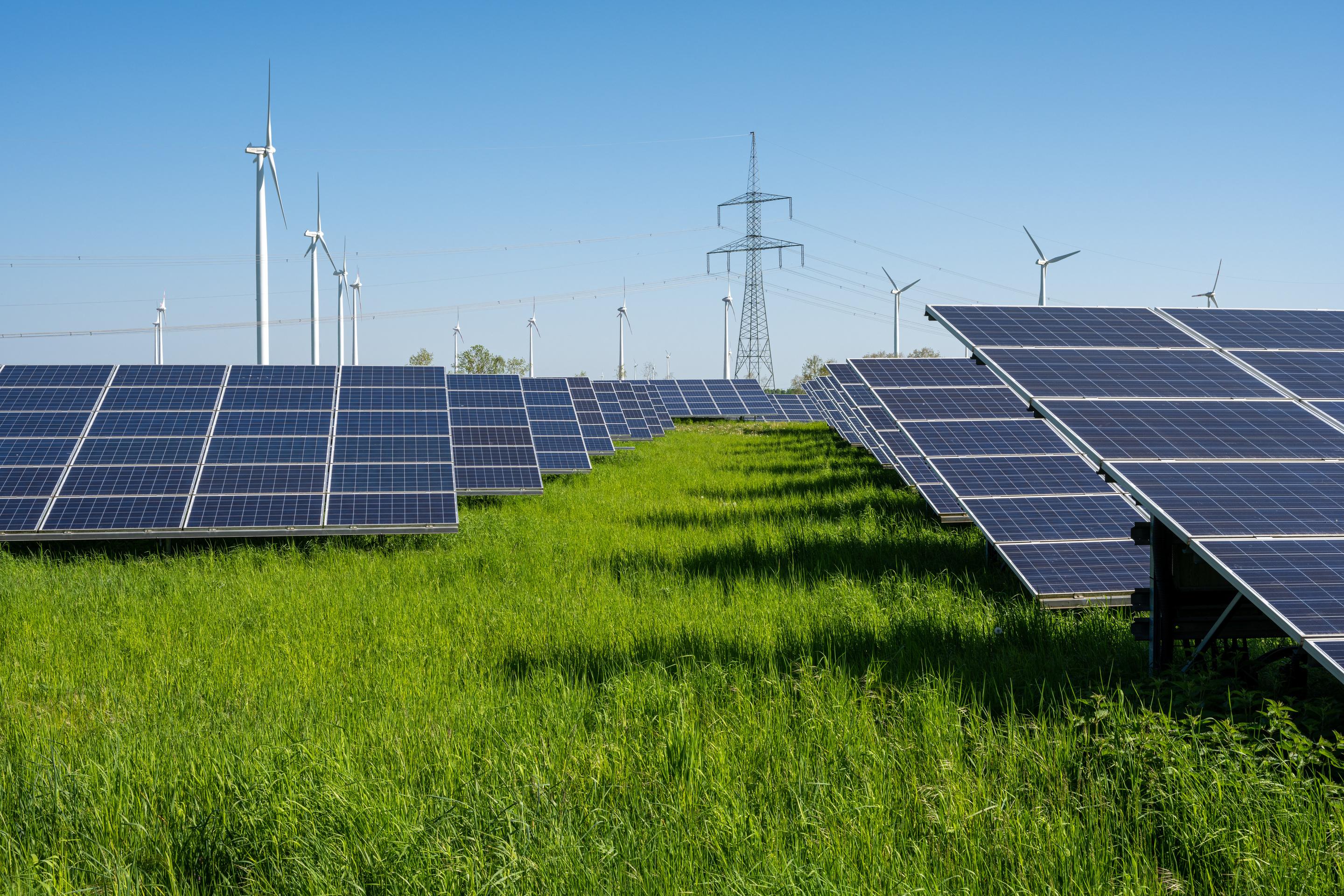
Further, though the Middle East region is rich in fossil fuels, it also faces the challenges of climate
ENGIE encounters when deploying distributed solar solutions in the Middle East, and how does the company effectively address these challenges?
First, there are obvious technical and logistical challenges with distributed solar. These solutions require careful planning and execution to ensure optimal performance and safety Site selection, grid connection, system design, equipment procurement, installation, operation, and maintenance must be considered ENGIE addresses these challenges by leveraging its global expertise and local presence and partnering with reputable suppliers and contractors
IN CONVERSATION
MiddleEast|AnnualEdition2024 28 WFESExpoSpecialIssue SOLARQUARTER

Second, distributed solar solutions involve significant upfront capital investment and longterm operational costs, which may deter widescale adoption There are otherfinancial and regulatory barriers, such as high-interest rates, limited financing options, complex permitting processes, and uncertain policy frameworks. However, ENGIE addresses these challenges by offering flexible and competitive financing solutions through PPAs and engaging with stakeholders and authorities to advocate for supportive and stable policies and regulations
Distributed solar solutions are relatively new and unfamiliar to some customers in the Middle East, who may have doubts or misconceptions about their benefits, costs, and risks ENGIE has worked to increase customer awareness and acceptance of this form of renewable energy by providing clear and accurate information, education, and communication and demonstrating successful case studies and testimonials
Could you delve into the technological innovations ENGIE is actively leveraging to optimize the efficiency and effectiveness of distributed solar solutions within the Middle East region?
Solar technology is developing rapidly. Leveraging our global expertise and experience, ENGIE is at the forefront of this technological leap:
Bifacial panels: These solar panels can capture and convert sunlight from both sides, increasing the energy output by up to 30% compared to conventional panels
Single-axis tracking: These systems allow the solar panels to follow the sun's movement throughout the day, maximizing solar exposure and generation
Robotic cleaning: These devices automatically clean the solar panels using waterless brushes, reducing dust accumulation and maintenance costs
String inverters: These devices convert the direct current (DC) electricity produced by the solar panels into alternating current (AC) electricity that can be used by appliances or exported to the grid String inverters are more compact, efficient, and reliable than central inverters, commonly used in largescale solar plants
Battery storage: This technology maximizes solar self-consumption, increasing energy independence and resilience, and can also be used as a back-up or supporting the grid stability
How does ENGIE navigate and adapt its strategy for implementing distributed solar solutions in response to the regulatory landscape present within the Middle East region?
We keep track of the changes and trends in the policies and regulations that affect distributed solar solutions in the Middle East, such as tariffs, subsidies, quotas, standards, and permits ENGIE analyzes the impact and implications of these developments on its current and potential projects and its customers and partners.
ENGIE ensures that its distributed solar solutions comply and align with the regulatory requirements in the region, such as safety, quality, and environmental standards We have also aligned our distributed solar strategy with national and regional objectives and targets for renewable energy, such as the UAE Energy Strategy 2050 and the Saudi Vision 2030
Third, ENGIE engages and collaborates with the relevant regulatory stakeholders in the region, such as governments, regulators, utilities, and industry associations We work to establish and maintain constructive and mutually beneficial relationships with these stakeholders and influence and contribute to the policy and regulatory development and implementation of distributed solar solutions
This technology maximizes solar selfconsumption, increasing energy independence and resilience, and can also be used as a back-up or supporting the grid stability
What overarching vision does ENGIE hold for the future of distributed solar solutions within the Middle East, and can readers expect any forthcoming expansion initiatives or innovative projects in the near future?
ENGIE plans to increase its distributed solar capacity and market share in the Middle East and enter new and emerging markets in the region. We also plan to expand our distributed solar offerings and services, such as hybrid systems, battery storage, and smart grid solutions
Second, ENGIE strives to innovate and enhance its distributed solar technologies and solutions by adopting the latest best practices, improving performance and quality, and reducing costs and risks ENGIE strives to integrate its distributed solar solutions with other renewable energy sources and energy efficiency measures, creating holistic and comprehensive energy solutions
Further, ENGIE aims to empower and satisfy its distributed solar customers and stakeholders by providing customized and flexible solutions, delivering reliable and competitive services, and supporting them with transparent and responsive communication We aim to create and share value with our distributed solar customers and stakeholders by helping them achieve their environmental, social, and economic goals

I
MiddleEast|AnnualEdition2024 29 WFESExpoSpecialIssue SOLARQUARTER
COMPANY FEATURE

Leading the Green Economy: pv.market's Disruptive Approach to Solar Trading
Mission

g gy p
Key Features
A Neutral B2B Digital Marketplace for Wholesale transactions
of Renewable Energy Components & Services
Bidding and fair pricing, apart from regular buying and selling
One Stop Solution for all your Renewable energy Needs
Available & On-time delivery in SEA, ME, Africa, Europe & CIS
Risk-free transactions.
Inducing knowledge to your procurement
Significantly reducing the procurement cycle
Competitive pricing with immediate product availability
Multiple choices of Brands
Available on Cloud, Android & iOS
AREEM - Academy of Renewable Energy & Environmental Management
Vision
Our vision is to be simple, scalable, sustainable, stable and secure digital marketplace for trading solar energy components to enhance solar adoption globally and make it economically viable.
We aim to realise our vision by embracing the core principles of 'cooperation, collaboration, and consolidation' by being credible, concise, consistent, complete, and aligned.
Current hurdles in the commercial landscape of distributed Solar business
Due to several critical factors, the solar industry is navigating its most turbulent period
Overcapacity in Photovoltaic (PV) Module Production
An overproduction crisis looms with a surplus of 30% in PV modules, stemming from aggressive manufacturing in 2021-2022 This period saw a surge in year-over-year growth by over 60% In stark contrast, the growth plummeted to below 30% the following year, and projections show a potential flatline in growth for the next few years
PV Module Price Decline
The second half of 2023 marked a steep 45% drop in PV module prices, a trend that underscores the sector's pricing volatility Predicting future costs remains challenging due to fluctuating market demands and an array of contributing factors
MiddleEast|AnnualEdition2024 30 WFESExpoSpecialIssue SOLARQUARTER
Emerging Technologies on the Horizon
Cutting-edge technologies like Topcon, HJT, and xBC are on the cusp of commercial release, promising enhanced efficiency and reduced Levelized Cost of Electricity (LCOE) Topcon is poised to dominate, predicting that over 60% of existing production capabilities will transition to this technology
Shortage of Skilled Personnel
The sector is experiencing a critical shortage of skilled professionals at all management levels, posing a significant challenge across various markets. Skilled resources must also be developed in line with the new business sectors in renewable energy, e g Carbon credit financing or trading, Net Zero, Sustainability, Climate change, intelligent grids, Energy transition, cross-border energy trade, energy market, energy management, ESG, etc
Impact On Procurement Cycles
In the distributed solar sector, which primarily serves the residential, commercial, and industrial markets, these overarching challenges translate into protracted procurement cycles ranging from 60 to 120 days, compounded by an average 30-day transit time. Efforts to mitigate this through inventory strategies often backfire due to the severe price volatility Consequently, significant capital is tied up and wasted, with extensive stockpiles observed at ports in 2023, adding to the unpredictability and financial strain
Supply Chain Complications
With most production based in China and a significant market share in the Americas, Europe, and the Middle East, logistics remain a pivotal factor in product availability and pricing 2023 has seen sea freight prices vary by up to tenfold.
Neglected Channel Management
Effective channel management is essential, yet it is an area that many tier 1 manufacturers, who contribute less than 35% to the distributed solar sector, overlook Most of them focus only on a utility scale A robust channel network can enhance alignment, agility, visibility, predictability, and stability in the demand chain However, it requires n

Shift Towards Regional Manufacturing
A call for localised manufacturing is gaining momentum, driven by supply chain complications and a global push for sustainability and renewable energy. However, with more than 90% of production currently centralised in China, a shift could disrupt market prices significantly Establishing independent local production is a formidable challenge that may span several years
Addressing these issues in the distributed solar sector requires adopting collaborative supply chain practices a strategy that has proven successful in other industries like automotive, electronics, and computing An efficient demand chain is a crucial component of holistic supply chain management, and by employing collaborative principles, the solar industry can aim for a sustainable, scalable, and stable supply chain post-production
pv.market-Buyer&SellerBenefits

SummingUp
pv market is designed to reshape the landscape of photovoltaic component trading with its advanced digital platform and it meets the highest standards of regulation, transparency, and neutrality. pv.market is uniquely positioned to foster a secure and efficient trading environment for its verified members The platform's commitment to providing streamlined, equitable services is a testament to its forward-thinking approach, addressing the pressing needs of the solar sector As it embarks on its journey, pv.market is not just a marketplace but a beacon of knowledge and a catalyst for change in the renewable energy domain With a vision to expand its reach beyond solar components to a wider array of renewable resources, pv market is on course to become an integral part of the green economy's infrastructure The platform's commitment to addressing current industry challenges, coupled with its robust governance and management structure, ensures it is well-equipped to navigate the complexities of the solar market

AboutTheFounder

L K Verma stands at the forefront of entrepreneurial excellence, renowned for his strategic expertise in enterprise development, growth strategies, and supply chain management His career, spanning over 31 years, has been marked by significant achievements in various sectors, predominantly in
India, the Middle East, and Africa. Mr. Verma's journey is a compelling narrative of how leadership, coupled with deep industry knowledge, can catalyze innovation and growth in dynamic sectors like renewable energy
Under the experienced leadership of Mr L K Verma, pv market is more than a business venture; it is a movement towards a more sustainable and efficient future in renewable energy Mr Verma's extensive experience, strategic prowess, and dedication to sustainability embody the essence of pv market's mission As pv market prepares to make its mark in the EMEA region and beyond, its role in shaping the future of solar energy trading and contributing to global sustainability efforts is undeniable. Mr. Verma's leadership not only steers pv market on its path of innovation and excellence but also inspires a broader shift towards renewable energy adoption and digital transformation in the industry
MiddleEast|AnnualEdition2024 31 WFESExpoSpecialIssue SOLARQUARTER
Featured Insights
The Middle East's Role in Global Renewable:
A Closer Look at Solar Energy Contributions and Climate Action
Climate change recently one of the most intensive pressing issues and presents the biggest threat to the sustainable future for our planet Lucky us that the main causes of climate change are well understood and challenging us to make hard and irreversible action, depending on fossil fuels and deforestation, which leads to higher levels of carbon dioxide in the atmosphere Thankfully, there are many opportunities to replace the use of fossil fuels using cleaner, renewable sources of energy such as solar, wind and water. Despite reducing carbon emissions helping to slow the rate of global warming However, only 20% of the total global energy consumption comes from renewable energy, which means the other 80% comes from fossil fuels-coal, oil and natural gas
Renewable energy bring important role by reducing greenhouse gas emissions and moving the world towards a cleaner, more sustainable and secure energy future Solar energy is a free and inexhaustible resource, beside the slowing down cost and rising technological efficiencies. And it is important for all countries to continue to invest in green energies to have a long-lasting impact on our planet's future and climate change
The 3,000 hours of sunshine availability per year in Middle East, with the significant reduction in the price of electricity production from solar power over recent years, and governments commitment to a sustainable future, efforts in the region are being redirected to the development of utility-scale solar power plants, which lead to increase the accumulative installed solar power in the region from 4,850 MW in 2017, to exceed 20,800 MW by 2022.
Promoting Renewable energy important for its for environment and economic benefits, the renewable resources almost inexhaustible, replenish themselves naturally can supply energy for the long term, reduce dependence on fossil fuels which cause pollution the major cause of global warming with tangible impact on humankind and other organisms on earth, also the fossil fuel price pushed up the world inflation rate and the ever uncertain global economy weakens trade and industry, beside jobs created and lower the cost of energy
Matching and integrating different renewable technologies can reduce the overall power generation costs, like integration between solar and wind energy, where solar energy generation with the highest power supply curve at noon can match the peaking energy, and wind energy has the highest power supply curve in the winter months. So for unavailable wind time periods we can generate electricity by solar energy Also, renewable energy can bring a practical solution to the technically feasible but economically expensive demand management options such reducing the investment in conventional generation, transmission and distribution system reinforcement and expansion
Therefore, a change in political attitude and promoting renewable energy is a matter of life for us and our plants. The landmark global climate change agreement was adopted in Paris 2015 The legally binding treaty now has 197 signatories, and its central aim is to keep


global temperature rise this century well below 2 degrees Celsius above pre-industrial levels, it also aims to pursue efforts to limit the temperature increase even further to 1 5 degrees Celsius Governments worldwide have become committed to achieve net-zero greenhouse gas emissions in the second half of this century This will require enormous scientific innovation and technological change, alongside with behavioral change and a move to low carbon energy like wind and solar power This bring big role for renewable energy in our future So solar power can save billions in energy costs and reduce CO2 emissions, where each kilowatt of solar power installed will prevent about 3000 pounds of CO2 from being emitted into the atmosphere.
The Middle East is an area that is well known for having huge solar potentials in its vast, hot deserts with more than 300 Sundays/year All of the countries in the region receive an average daily solar radiation of between 4 and 7.1 kW h/m2 in some cases reach 8 kW h/m2, with maximum value of sunlight duration up to 10 9 hours a day, which representing a huge potential for solar energy generation beside the majority of desert areas in Middle East are suitable for solar power installations, makes governments invest hugely in solar power, one of the earliest projects is the Ma'an Solar Park in Jordan, connected to the national grid in May 2014 in the south of the country producing 160 GWh of electricity per year, providing power for about 140,000 households, and The United Arab Emirates has the biggest solar power capacity in the entire Middle East and Dubai's Mohammad Bin Rashid Al Maktoum Solar Park is on its way to becoming the largest single-site solar park in the world, with a planned capacity of 5,000 MW by 2030
We can’t ignore the fact that how the proximity of these places to power networks and cities; where the avoided expensive cost to connect the more remote desert area to the power grid and would need to be redirected to any large-scale solar power project
At the moment, most of the solar power capacity installed and operational in the Middle East comes from small-scale photovoltaic installations Though solar energy is only just beginning to be thought of as a reliable and practical alternative to non-renewable sources of power in Middle East, There is numerous solar power projects in pipeline and in progress and many of these with big generating capacities Besides research in the region about improving solar energy efficiency is also expanding, so the use of solar panels as a power source becomes a more viable possibility for countries looking to diversify their energy sources So, solar energy future in the Middle East looks promising
Huge investment poured in solar energy, 70 GW total solar projects auctioned compared to 25 GW for all other technologies in 2020 worldwide, give us a hint how it’s important for the future of coming energy landscape, and Middle East with all potentials and willing have looking to become a major hub for producing solar energy with an aim of exporting solar energy to other parts of the world in demand By investing in the region with big projects like the Noor Abu Dhabi project, which set a new world record for the lowest cost of electricity for the solar PV power plant at the time, as well investing aboard like the
MiddleEast|AnnualEdition2024 32 WFESExpoSpecialIssue SOLARQUARTER
Featured Insights
Kamuthi Solar Power Project in India, currently one of the largest solar plants in the world with capacity of 648 MW produces enough electricity for 750,000 people The Middle East contributed 44% of the total global investment in solar energy in 2017, making it a very significant player in solar energy production Such successful solar projects demonstrate the capability of Middle East to act as a global leader in solar energy and thus show the great potential of Middle East in contributing to global renewable energy targets.
In addition, the Middle East has the opportunity to meet and exceed global 2030 renewable energy targets forecast show that the total installed capacity of renewable energy will exceed 260GW, where 20GW of which will be generated from solar power This means Middle East will reduce carbon emissions by 179 4 million metric tons annually, nearly equivalent of removing 39 million cars out of the roads each year and save 11 billion barrels of oil over the lifetime of the assets This not only helps to reduce the reliance on fossil fuels such as oil and gas, but it also hugely contributes to reducing global carbon emissions
It’s highly important to invest in required productive energy storage methods to be developed and substantial changes to the traditional utility infrastructure are needed in order to integrate the future expansion of solar power. So, there could be a prolific renewable energy transition make countries may looking to regional partnerships and alliances for sharing of goods, services, knowledge and technology emerge as part of achieving sustainable economic development through the use of solar power, which give Middle East a big role and contribution to further technological development globally in solar industry
The Middle East has traditionally relied on non-renewable fossil fuels, to meet increasing demands for power combined with economic growth And it’s become noticeable the accelerating reduction in the consumption of oil, gas, and coal in the region which can be related to the increase in the capacity of solar power This trend brings a number of favorable outcomes for the environment, like reducing the damage to the landscape caused by coal mining activities and reducing air pollution, which is a very significant advantage, by comparing how fossil fuels contribute to greenhouse gasses dramatically, and in result the climate change Beside the consumption of oil, gas, and coal increase Sulphur Dioxide gas in the air lead to more air pollution associated with respiratory diseases.
The Middle East, which contributes to about 8% of the global emissions from oil - the third largest emitter of greenhouse gasses from oil in the world – so by transition to more solar power causes huge reduction of greenhouse gasses which will bring new value to the region Thus, more extensive investment in solar power generation, leads to a significant reduction in these emissions, in the long term the subsequent changes in the climate could help to reduce the loss of biodiversity in fragile habitats in the region like coral reefs and mangrove forests Based on The World Health Organization predicts that the average person in the Eastern Mediterranean Region will live for 2 4 months longer just from environmental improvements created by clean energy transition As the reduction in greenhouse gas emissions and pollution will lead to a decline in chronic disease and lower healthcare costs
As the World Wide Fund for Nature describe it as "some of the most important in the world", and one of the knock-on effects from it is a boost in local and global economies through an increase in tourism, Resulting making the fragile biomes of Middle East more attractive destination for holidays, These new interests are important to supporting economies in the regions with promotion for sustainable uses of the land
Besides producing clean energy, like solar energy can support the United Nations Sustainable Development Goal of promoting sustained inclusive and sustainable economic growth, full and productive employment, and decent work for all by creating employment opportunities This global goal also helps the Middle East to achieve its own national goals of raising employment rates and increasing energy sustainability IRENA (the International Renewable Energy Agency) claims that Middle Eastern countries can increase local and countrywide electricity access, decrease greenhouse gas (GHG) emissions, help reduce global price flows due to fuel expenditures for fossil imports, and allow the countries to have electricity and water desalination price security and diversity This can provide large-scale work chances on both the tech side and also in manufacturing and construction, and hence may help make a substantial industrial foundation as part of developing solar energy into a Middle East area market
Despite all benefits and potentials for solar energy in Middle East, but still not working enough in this area and huge gap between countries raised, where most current renewable energy projects mainly promoted and adopted by governments and public entities, where The National Climate Change Plans made clear the need for a comprehensive energy use plan that will lead renewable energy implementation But huge efforts are still in needed to accelerate the transition In one hand, the intermittent and variable nature of solar energy poses challenges to grid stability and reliability as well as existing electricity systems in Middle East which need development and investment in the infrastructure In other, policies strategies and incentives needed to be brought upfront soon.
The World Bank recently promoted a number of general areas for development that help in adopting solar energy Firstly, the World Bank suggests for countries to looking to reduce uses of resources other than oil, Based on a suggestion that 'those without domestic oil production will import oil and often subsidize its use, leading to inefficient energy and carbon intensive electricity production and consumption' Secondly, gaining investor confidence in the use of renewable energy sources is critical, so it is important for clear policies and regulations to be adopted In addition, the World Bank suggests that greater emphasis should be placed on 'creating an enabling environment for solar power development' such as policies that reduce risk and attract investment Finally, the World Bank recommends that 'solar resource mapping' should be conducted in the region in order to inform policy and possible solar investment This is certainly an area for development and one that could yield numerous opportunities for geographers and geospatial scientists in the future

BASMA AL SHATTI
Head of Department of Community Service Responsibilities
Jordan Renewable Energy and Energy Efficiency Fund (JREEEF)
Ministry of Energy and Mineral Resources (MEMR)
MiddleEast|AnnualEdition2024 33 WFESExpoSpecialIssue SOLARQUARTER
MIDDLE EAST|RESEARCH INSIGHTS
Insights into Middle Eastern Solar Energy: Comparative Analysis of Capacity
The Middle East region is experiencing a significant transformation in its energy landscape, with a notable focus on solar power as a strategic priority This shift is driven by various factors, including abundant sunlight, growing energy demand, environmental concerns, and the declining cost of solar technology Governments in the region are setting ambitious targets for solar energy deployment and implementing policies to support its development
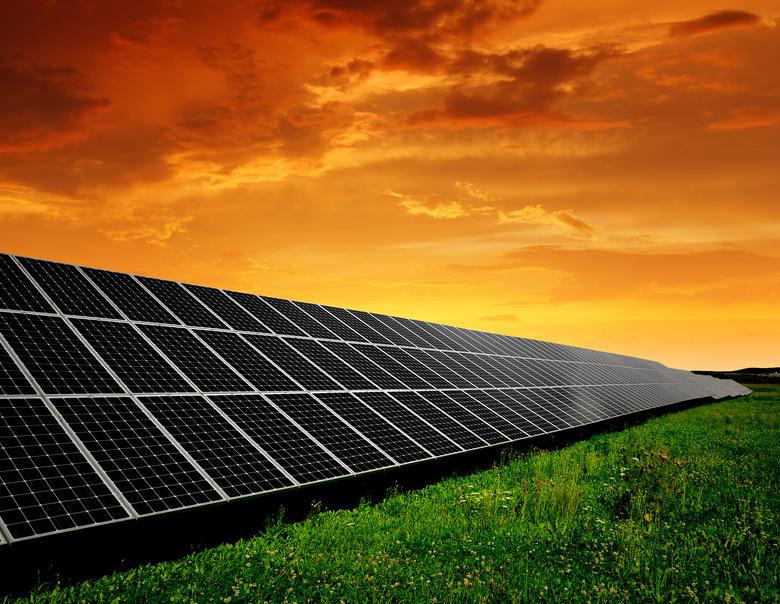
Over the past decade, the Middle East has made significant strides in expanding its solar energy capacity This growth can be attributed to proactive government initiatives, including feed-in tariffs, tax breaks, and renewable energy targets. Countries like the United Arab Emirates (UAE), Saudi Arabia, Jordan, Qatar, Oman, and Iran have announced ambitious renewable energy targets, contributing to the expansion of solar power infrastructure

Saudi Arabia, in particular, is experiencing rapid growth in its PV market, with estimated demand reaching 5.5-6.5 GW in recent years. The government is actively promoting renewable energy as part of its Vision 2030 plan, aiming to accumulate 40 GW of installed PV capacity by 2030 The Public Investment Fund (PIF) under the National Renewable Energy Program (NREP) plays a crucial role in financing Saudi Arabia's energy transition

Similarly, the UAE's PV market is thriving, with annual demand expected to increase steadily. Large-scale ground-mounted projects dominate the market, supported by government initiatives such as net metering and feed-in tariff schemes. The Emirates Water and Electricity Company (EWEC) has launched bidding processes for major PV projects like the AI Khazna project, contributing to the country's renewable energy goals
Advancements in solar technology have been instrumental in driving growth in the region Innovations such as utility-scale solar farms, rooftop installations, and concentrated solar power (CSP) plants have enhanced the efficiency and cost-effectiveness of solar energy systems Additionally, partnerships with international stakeholders have accelerated the deployment of solar projects, facilitating technology transfer and investment
The economic benefits of solar energy deployment are significant, with projects creating jobs, stimulating local economies, and reducing dependence on fossil fuel imports Despite impressive growth, the sector still faces challenges like intermittency issues and grid integration Addressing these challenges will require continued investment in research, infrastructure, and policy reforms
Looking ahead, the future of solar power in the Middle East appears promising With ongoing advancements in technology and increasing environmental awareness, solar energy is poised to play a greater role in the region's energy mix By leveraging abundant solar resources and embracing innovative solutions, the Middle East can pave the way for a more sustainable and resilient energy future

MiddleEast|AnnualEdition2024 34 WFESExpoSpecialIssue SOLARQUARTER
Featured Insights
Illuminating the Future: The Middle East's Pivotal Role in Global Renewables
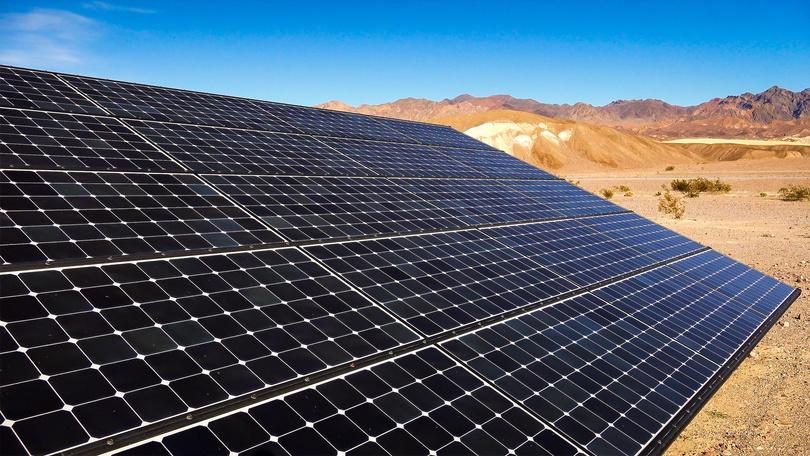
In the intricate tapestry of global energy dynamics, the Middle East stands as a region of immense significance. Traditionally known as the epicenter of the oil and gas industry, this region is undergoing a remarkable transformation, embracing renewable energy sources with fervor Among these, solar energy emerges as a beacon of hope, not only for the region's sustainable future but also for its substantial contribution to global climate action.
Historically, the Middle East has been synonymous with oil wealth, its vast reserves fueling economies around the world However, recognizing the finite nature of fossil fuels and the urgent need for environmental stewardship, governments in the region are pivoting towards renewable energy sources, particularly solar power
One of the key factors driving this shift is the region's abundant solar resources With its expansive deserts and extended periods of sunlight, the Middle East boasts some of the highest solar irradiance levels on the planet Harnessing this potential has become a strategic imperative, not only for meeting domestic energy needs but also for positioning the region as a major player in the global renewable energy market.
Countries like the United Arab Emirates (UAE), Saudi Arabia, and Jordan have spearheaded ambitious renewable energy initiatives, with solar energy at the forefront The UAE's Mohammed bin Rashid Al Maktoum Solar Park, for instance, is one of the world's largest solar projects, aiming to generate 5,000 megawatts (MW) of clean energy by 2030 Similarly, Saudi Arabia's Renewable Energy Project Development Office (REPDO) has launched numerous solar power projects Notably, ACWA Power has signed an agreement with Water and Electricity Holding Company (Badeel) to construct one of the world’s largest single-site solar power plant in Al Shuaiba With a planned generation capacity of 2,600 MW, the plant is set to be operational by 2025
These endeavors not only demonstrate the region's commitment to diversifying its energy mix but also underline its potential to become a global leader in renewables By leveraging their natural resources and investing in cutting-edge technology, Middle Eastern countries are not only meeting their own energy demands sustainably but also exporting surplus energy and expertise to international markets

Furthermore, the transition to solar energy aligns with the broader climate goals outlined in the Paris Agreement By reducing their reliance on fossil fuels and curbing greenhouse gas emissions, Middle Eastern nations are playing a crucial role in mitigating climate change on a global scale This is particularly significant considering the region's historical contribution to carbon emissions and its vulnerability to the impacts of climate change, such as water scarcity and rising temperatures
However, the journey towards a renewable future is not without its challenges Despite the abundance of sunlight, the development of solar infrastructure requires significant investment in technology, infrastructure, and human capital Moreover, factors such as intermittency, grid integration, and energy storage pose complex engineering and logistical hurdles that must be addressed to ensure the reliability and scalability of solar power
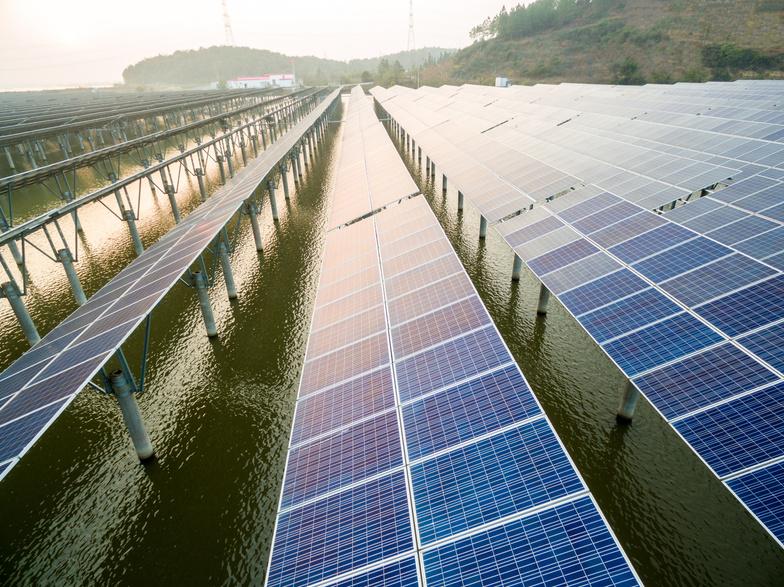
Additionally, geopolitical tensions and socio-economic disparities within the region can impact the pace and scale of renewable energy deployment Collaborative efforts and regional partnerships will be essential to overcome these barriers and unlock the full potential of solar energy in the Middle East
As we stand at the crossroads of energy transition, the Middle East's embrace of solar power signifies a paradigm shift with far-reaching implications Not only does it signal a departure from fossil fuel dependency towards a more sustainable energy future, but it also positions the region as a pivotal player in the global fight against climate change
In harnessing the power of the sun, the Middle East not only illuminates its own path to prosperity but also shines a light of hope for a more sustainable and equitable world for generations to come Through concerted efforts and unwavering commitment, the region has the opportunity to not only shape its own destiny but also inspire a brighter future for humanity as a whole

SeniorAdvisor AJMSGlobal NAT VORA MiddleEast|AnnualEdition2024 35 WFESExpoSpecialIssue SOLARQUARTER
Resilience and Sustainability in
the
Solar
Landscape:
Strategies and Innovations by EDF Renewables Middle East

AyhamMkalalati
Director of Operations
EDF Renewables Middle East
KEY HIGHLIGHTS
EDF Renewables ME prioritizes holistic planning, leveraging expert insights to optimize resilience
Strategic initiatives focus on eradicating failures, rigorous standards, and proactive participation.
Advanced tech like ML and AI drive reliability, positioning EDF at the innovation forefront.
What are the primary challenges
EDF Renewables Middle East encounters, and how does it ensure resilience of PV power projects in the region, and address these challenges?
We continue to see the Middle East region announce the lowest tariffs globally, given the maturity and competitive landscape. The challenge is always to be able to quickly digest, trust and carefully adopt new technologies that are coming up while ensuring EDF Renewables’ competitiveness in this exciting market. EDF Renewables has established a solid team of experts that can understand the different dynamics and take a holistic approach in understanding the risks and mitigating for them to ensure resilience of our PV power projects in the region.
In the rapidly evolving landscape of the solar PV industry, EDF Renewables Middle East encounters the dual challenge of integrating cutting-edge technology, which has its inherent risks and climate change, which is unpredictable, while navigating the region's record tariffs. The essence of our challenge lies in our ability to swiftly understand, trust, and implement emerging technologies to sustain EDF Renewables’ competitive edge in this exciting market, while ensuring the long lifetime of the PV power plants, we develop.
To address these challenges and ensure the resilience of our PV power projects in the region, EDF Renewables Middle East has invested in building a multifaceted team of specialists, locally and globally Our team of
experts are able to quickly understand and work together on the evolving dynamics of the market, from technological advancements to cost efficiencies
Can you discuss the key strategies employed by EDF Renewables Middle East to enhance the durability and longevity of PV power projects, particularly in harsh environmental conditions?
In addressing the critical need for durability and longevity of PV power projects, especially under the harsh environmental conditions prevalent in the Middle East, EDF Renewables Middle East adopts a series of strategic initiatives that reflect our global objectives These strategies are tailored to address the unique challenges posed by extreme weather, ensuring that our projects not only survive but thrive over their intended lifespan
Firstly, the eradication of major industrial failures stands as a cornerstone of our approach Through strict adherence to our Industrial Policy principles, we aim to significantly reduce, the occurrence of failures, ensuring that our projects are built to last
Moreover, we implement a phased strategy encompassing Ready for Design Review, Ready To Build, Ready for Construction, Ready To Operate stages This structured approach allows for meticulous planning and execution at every project phase, from conception to operation By ensuring that each project meets these rigorous standards, we significantly enhance their
EDF Renewables Middle East adopts a series of strategic initiatives tailored to address the unique challenges posed by extreme weather.
resilience and longevity through sharing knowledge and adopting best practices from across our worldwide operations
Finally, ensuring active participation and alignment within our committees before proceeding with project delivery and asset operations, we foster a unified approach to tackling the challenges. This proactive involvement ensures that all aspects of project planning and execution are thoroughly vetted, with a clear focus on durability and operational longevity.
How does EDF Renewables Middle East approach site selection and project planning to minimize risks and optimize the resilience of PV power projects in the Middle East?
EDF Renewables approach to project planning in the Middle East is uniquely tailored to navigate the distinctive landscape of the region, where government authorities typically designate land for renewable energy projects. This method simplifies the initial stages of project development by eliminating the need for developers to search for suitable sites and navigate the complex maze of
IN CONVERSATION
MiddleEast|AnnualEdition2024 36 WFESExpoSpecialIssue SOLARQUARTER
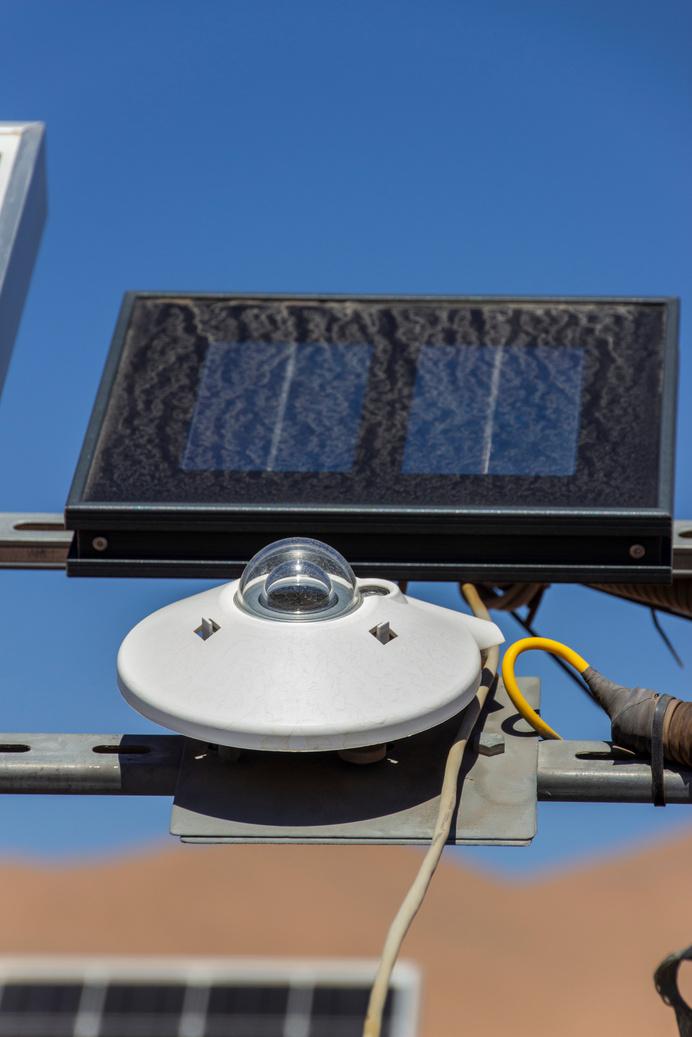
governmental and regulatory approvals common in other regions However, the land allocated by the government often presents its own set of challenges, primarily due to its location in remote, barren desert areas with harsh conditions and uneven terrain
Recognizing these challenges, EDF Renewables adopts a proactive and thorough strategy from the early stages Despite the initial information provided about the site, we do not solely rely on the project site documents Instead, we conduct detailed site visits and tests involving both local and international experts. This hands-on approach allows us to gain an in-depth understanding of the site's specific characteristics, both on the surface and below ground.
By integrating this comprehensive site analysis into our planning process, we are better positioned to collaborate effectively with our partners, including technology providers and contractors
What role do advanced technologies and innovations play in improving the reliability and longevity of PV power projects managed by EDF (Middle East)?
EDF Renewables Middle East is at the cutting edge of enhancing the reliability and longevity of our PV power projects through the adoption of advanced technologies and innovations Specifically, machine learning and artificial intelligence (AI) are pivotal, transforming the management of these projects by enabling the analysis of millions of data points for datadriven decision-making This shift towards predictive maintenance, from the traditional preventive approach, significantly improves operational efficiency and reduces downtime, thereby extending the lifespan of our projects, while positioning EDF Renewables at the forefront of innovation and sustainability in the renewable energy sector
Could you elaborate on the importance of proactive maintenance and monitoring practices in preserving the performance and lifespan of PV power projects, and how does EDF Middle East implement these practices?
The role of proactive maintenance and monitoring in preserving the performance and lifespan of PV power projects is paramount, particularly in the challenging and harsh weather conditions of the Middle East, and the gigawatt scale of solar PV projects today Given that PV projects in this region are designed for operation periods of up to 30 years, adopting a meticulous and forward-thinking maintenance strategy is essential to extend the assets' lifetime and ensure a favorable return on investment.
EDF Renewables Middle East adopts a comprehensive approach towards asset management, operations, and maintenance, positioning ourselves not just as developers but also as the asset owners and operators of our solar power projects. This holistic strategy allows us to align our objectives fully with the performance enhancement, energy generation maximization, and asset life prolongation of our projects.
What are the critical factors that stakeholders, including governments, investors, and local communities, should consider to ensure the successful and sustainable operation of PV power projects over the long term in the Middle East?
For the successful and sustainable operation of PV power projects in the Middle East over the long term, it is imperative for stakeholders, including governments, investors, and local communities, to pivot their focus towards the establishment and unification of specifications, standards, regulations, and best practices The solar PV sector has
witnessed a remarkable journey, achieving a milestone where solar energy now stands as one of the most cost-effective sources of electricity globally This achievement marks the beginning of a new phase where the emphasis should transcend beyond cost reduction, and onto “Net-Zero” as we rely less on fossil fuel based energy sources
The critical factors that stakeholders should consider include:
Establishment of Unified Standards and Regulations: Ensuring that there are clear, unified standards and regulations across the industry is essential to maintain highquality installations, operations, and maintenance practices, thereby ensuring that all solar PV projects meet and exceed their expected performance and lifespan.
Emphasis on Sustainable Development: ensuring that all initiatives contribute positively to the environmental, social, and economic factors of the region.
Documentation and Best Practices: Comprehensive documentation of standards, regulations, and best practices is crucial, promoting continuous improvement and innovation in the sector
Community Engagement and Education: Engaging local communities, spreading awareness of social and environmental impact, establishing solid educational programs are key for ensuring for fostering a sustainable future.
Investment in Innovation and Technology: Continuous investment in innovation and technology is essential to enhance efficiency, reduce costs further, and address potential challenges such as energy storage and grid integration
By focusing on these factors, stakeholders can ensure that PV power projects are not only successful and cost-effective, but also sustainable and a cornerstone for future generations

I
MiddleEast|AnnualEdition2024 37 WFESExpoSpecialIssue SOLARQUARTER
MIDDLE EAST|RESEARCH INSIGHTS
Deciphering Solar Policies: Evaluating Middle Eastern Nations' Strategies in Solar Energy
The Middle East stands at a pivotal crossroads in its energy landscape, facing both the challenges of traditional resource depletion and the opportunities presented by renewable energy sources As global attention increasingly shifts towards sustainable solutions, solar energy emerges as a cornerstone of the region's transition towards a more diversified and environmentally conscious energy mix In this context, understanding the solar policies adopted by Middle Eastern nations becomes crucial for assessing their commitment to renewable energy and their potential impact on regional and global energy dynamics.
The Middle East, endowed with abundant sunlight and vast expanses of uninhabited desert terrain, possesses immense potential for solar energy development Countries across the region have recognized this potential and have embarked on ambitious solar energy initiatives aimed at harnessing solar power to meet domestic energy demands, reduce dependency on fossil fuels, mitigate carbon emissions, and stimulate economic growth
One of the most notable initiatives in the Middle East is the United Arab Emirates' (UAE) ambitious renewable energy program, exemplified by the Mohammed bin Rashid Al Maktoum Solar Park in Dubai With an envisaged capacity of 5,000 MW by 2030, the park represents one of the world's largest single-site solar projects Through strategic partnerships with international stakeholders and innovative financing mechanisms, the UAE has demonstrated its commitment to embracing solar energy as a key component of its energy transition strategy
Similarly, Saudi Arabia, the region's largest oil producer, has unveiled ambitious plans to develop renewable energy, including solar power, under its Vision 2030 agenda The kingdom aims to significantly increase its renewable energy capacity, with plans to generate 50% of its electricity from renewables by 2030 The recent launch of the Sakaka solar project, the kingdom's first utility-scale solar plant, marks a significant milestone in Saudi Arabia's renewable energy journey and signals its commitment to diversifying its energy portfolio

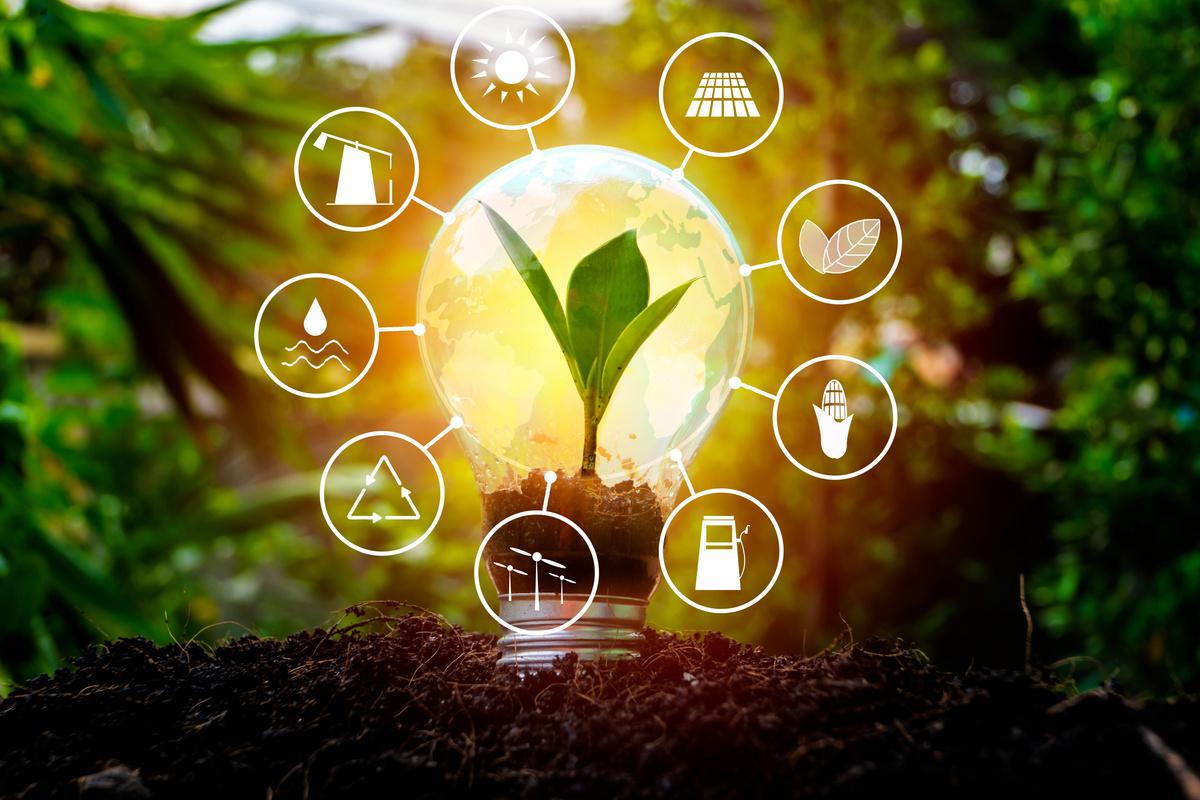
In neighboring Jordan, the government has prioritized renewable energy development as a means to enhance energy security and reduce reliance on imported fossil fuels The successful implementation of the Shams Ma'an solar power plant, coupled with favorable regulatory frameworks and incentives for renewable energy investments, has positioned Jordan as a regional leader in solar energy deployment
Despite these commendable efforts, challenges persist in realizing the full potential of solar energy in the Middle East Policy and regulatory frameworks, while improving, remain complex and fragmented across different jurisdictions, presenting barriers to investment and project development. Inconsistent policy signals, bureaucratic hurdles, and limited access to financing often impede the scalability and sustainability of solar projects, particularly for smaller players and decentralized energy initiatives
Furthermore, geopolitical tensions and regional conflicts pose security risks that could disrupt energy infrastructure and investment flows, underscoring the need for stability and cooperation among Middle Eastern nations to foster a conducive environment for solar energy development
Addressing these challenges requires a multifaceted approach that encompasses policy coherence, regulatory certainty, capacity building, and international cooperation Governments in the Middle East must prioritize the harmonization of policies and regulations to create a transparent and investor-friendly environment that attracts domestic and foreign investments in solar energy projects.
Moreover, enhancing technical and institutional capabilities, promoting research and development, and fostering public-private partnerships are essential for driving innovation, reducing costs, and overcoming technical barriers associated with solar energy deployment
On the international front, regional cooperation initiatives such as the Arab Renewable Energy Commission and the Gulf Cooperation Council can play a pivotal role in facilitating knowledge sharing, technology transfer, and joint investments in solar energy infrastructure, thereby maximizing the collective benefits of renewable energy integration across the Middle East
While the Middle East holds tremendous potential for solar energy development, realizing this potential requires concerted efforts to address policy and regulatory challenges, enhance institutional capacities, and foster regional cooperation By embracing solar energy as a catalyst for sustainable development and economic diversification, Middle Eastern nations can chart a path towards a more resilient, inclusive, and environmentally sustainable energy future
MiddleEast|AnnualEdition2024 38 WFESExpoSpecialIssue SOLARQUARTER

MiddleEast|AnnualEdition2024 39 WFESExpoSpecialIssue SOLARQUARTER
MIDDLE EAST|RESEARCH INSIGHTS
Powering The Future: Grid Integration And Storage Solutions For Large-Scale Solar Projects In The Middle East
The Middle East, with its abundant sunlight and vast expanses of desert terrain, is poised to become a global leader in solar energy production
As countries in the region ramp up their efforts to diversify their energy sources and reduce reliance on fossil fuels, large-scale solar projects have emerged as a cornerstone of their sustainable energy strategies However, as the region's solar capacity continues to expand, the need for effective grid integration and storage solutions becomes increasingly critical to ensure reliable and resilient power supply
Grid integration is the process of incorporating renewable energy sources, such as solar power, into the existing electrical grid infrastructure In the Middle East, where solar irradiance levels are among the highest in the world, integrating large-scale solar projects into the grid presents both opportunities and challenges.
One of the primary challenges of grid integration in the Middle East is the variability of solar power generation due to factors such as cloud cover and diurnal patterns Unlike conventional power plants, which can adjust their output according to demand, solar power generation is contingent on weather conditions, making it inherently intermittent As a result, integrating large amounts of solar power into the grid requires careful planning and coordination to maintain grid stability and reliability
To address this challenge, countries in the Middle East are investing in advanced grid management technologies and smart grid infrastructure These technologies, which include real-time monitoring, forecasting, and demand response systems, enable grid operators to anticipate fluctuations in solar power output and adjust grid operations accordingly. By optimizing grid performance and balancing supply and demand in real-time, these technologies help maximize the integration of solar power while ensuring grid stability and reliability
Another key aspect of grid integration is the development of interconnection infrastructure to facilitate the transmission of solar power from remote solar farms to population centers and industrial hubs
In the Middle East, where solar projects are often located in remote desert regions with limited existing infrastructure, building robust transmission networks is essential to unlock the full potential of solar energy resources.

Countries like the United Arab Emirates (UAE) and Saudi Arabia have made significant investments in interconnection projects, including high-voltage transmission lines and substations, to connect large-scale solar projects to the grid These investments not only enable the efficient transmission of solar power but also support economic development by creating jobs and stimulating investment in infrastructure development
In addition to grid integration, the deployment of energy storage solutions plays a crucial role in enhancing the reliability and flexibility of large-scale solar projects in the Middle East. Energy storage systems, such as batteries and pumped hydro storage, allow excess solar power generated during periods of high irradiance to be stored for later use when demand is high or solar generation is low
Energy storage also helps mitigate the impact of intermittency and variability inherent in solar power generation, providing grid operators with greater control over the timing and delivery of electricity By smoothing out fluctuations in solar power output and ensuring a stable and consistent energy supply, energy storage solutions enhance the economic viability and grid integration of large-scale solar projects in the Middle East
Furthermore, advances in energy storage technologies, coupled with declining costs, are making energy storage an increasingly attractive option for solar project developers in the region Governments and utilities across the Middle East are exploring various energy storage solutions and incentivizing investment in storage infrastructure to accelerate the transition towards a more sustainable and resilient energy future.
In conclusion, grid integration and energy storage solutions are indispensable components of the Middle East's transition towards largescale solar energy deployment By leveraging advanced technologies and strategic investments in grid infrastructure and energy storage, countries in the region can unlock the full potential of their solar resources and pave the way for a more sustainable and prosperous future As the sun rises on a new era of energy innovation in the Middle East, the journey towards powering the future with solar energy has only just begun

MiddleEast|AnnualEdition2024 40 WFESExpoSpecialIssue SOLARQUARTER

MiddleEast|AnnualEdition2024 41 WFESExpoSpecialIssue SOLARQUARTER
MIDDLE EAST|RESEARCH INSIGHTS
Unveiling Solar Innovation: Advancements Shaping the Middle East's Energy Landscape
The Middle East, historically known for its vast oil reserves, is experiencing a profound transformation in its energy sector As global concerns over climate change and sustainability escalate, countries in the region are turning towards renewable energy sources, with solar power leading the charge Amidst this transition, a wave of innovation is sweeping across the Middle East, driving advancements in solar technology and reshaping the region's energy landscape
One of the most notable advancements in solar innovation is the development of highly efficient photovoltaic (PV) modules PV technology, which converts sunlight directly into electricity, has experienced remarkable improvements in efficiency and costeffectiveness Manufacturers are producing solar panels with higher conversion efficiencies, allowing for greater electricity generation per unit area of solar panels Moreover, advancements in materials science and manufacturing processes have led to reductions in the cost of PV modules, making solar power more economically competitive with traditional energy sources
In addition to improving the efficiency of PV modules, researchers and engineers are exploring novel materials and designs to enhance the performance and durability of solar panels For example, perovskite solar cells, a relatively new class of solar technology, have shown promising efficiency gains and cost reductions compared to traditional siliconbased solar cells Perovskite solar cells can be manufactured using lowcost materials and processes, making them a potentially game-changing technology for solar energy deployment in the Middle East and beyond
Another area of solar innovation gaining traction in the Middle East is concentrated solar power (CSP) technology Unlike PV technology, which directly converts sunlight into electricity, CSP systems use mirrors or lenses to concentrate sunlight onto a receiver, generating heat that can be used to produce electricity through steam turbines or heat exchangers CSP technology offers the advantage of thermal energy storage, allowing for the generation of electricity even when the sun is not shining. This capability is particularly valuable in the Middle East, where demand for electricity remains high even during night-time hours

Recent advancements in CSP technology include the development of higher temperature receivers and heat transfer fluids, which enable CSP plants to achieve greater efficiencies and lower costs. Additionally, innovations in thermal energy storage systems, such as molten salt and phase change materials, are extending the operational flexibility and reliability of CSP plants, enhancing their competitiveness in the energy market
Beyond hardware innovations, digitalization and data analytics are playing an increasingly important role in optimizing the performance and operation of solar power plants in the Middle East Advanced monitoring systems and predictive analytics algorithms allow operators to remotely monitor and manage solar assets in real-time, identifying potential issues and optimizing energy production. By harnessing the power of data, solar operators can improve efficiency, reduce downtime, and maximize returns on investment in solar projects
Furthermore, the integration of solar power with emerging technologies such as artificial intelligence (AI), blockchain, and Internet of Things (IoT) is opening up new opportunities for innovation and value creation in the Middle East's energy sector. AI algorithms can optimize solar plant operations by predicting solar irradiance, adjusting panel angles, and scheduling maintenance tasks to maximize energy output Blockchain technology offers transparent and secure platforms for peer-to-peer energy trading and financing, empowering consumers and communities to participate in the solar energy ecosystem.

In conclusion, solar innovation is driving a profound transformation in the Middle East's energy landscape, paving the way for a more sustainable and resilient future With advancements in PV technology, CSP systems, digitalization, and emerging technologies, solar power is becoming increasingly accessible, affordable, and reliable in the region. As the Middle East embraces solar innovation, it is poised to emerge as a global leader in renewable energy deployment, contributing to a cleaner environment, energy security, and economic prosperity for generations to come
MiddleEast|AnnualEdition2024 42 WFESExpoSpecialIssue SOLARQUARTER

SERIES EVENTS
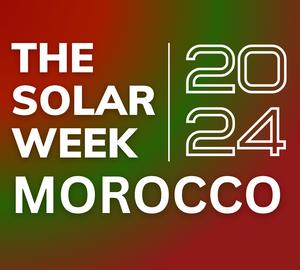
Morocco
Thursday, 9 May 2024

Oman
Thursday, 10 Oct 2024

SaudiArabia
Thursday, 25 July 2024

20 24

Cairo
Thursday, 24 Oct 2024
FLAGSHIP EVENTS

Jordan
Thursday,8 Aug 2024
THE SOLAR WEEK


Algeria
Thursday, 5 Dec 2024

Dubai
May 2024
Dubai
Thursday, 19 Sep 2024
Dubai
Thursday,1 Aug 2024

MENA 2024SUMMIT
wednesday, 29 May 2024
SOLARSHOW MIDDLEEAST TILITY 2 0 2 4
I ED MIDDLEEAST UMMIT 024 middleeast
20 24 ASSETS SOLAR
Get in touch: nikita@firstviewgroup com| +91 7718877515 Smriti@firstviewgroup com| +91 7718877514





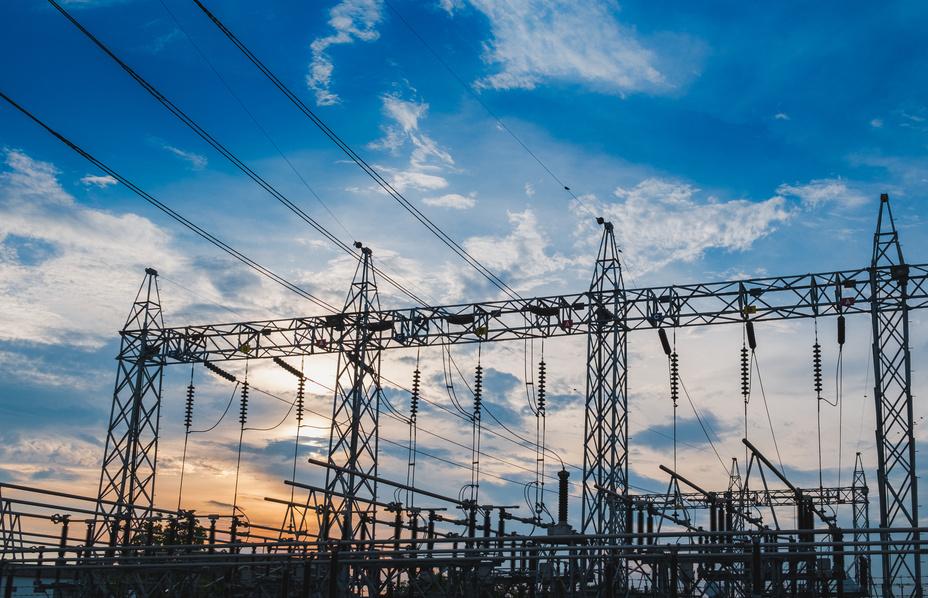

SOLARSHOW MIDDLEEAST TILITY 2 0 2 4 FINS L FINANCINGUTILITYSOLAR AFRICA 2024 ADVANCINGGRIDINTEGRATION 2024 GridOpt SUMMIT TECHINNOVATE CUTTING-EDGE SOLUTIONS|2024 Solar Utility Solar Floating Solar Wind-Solar Hybrid Energy Storage Finance and Investment Government Think Tanks & Policy Maker WHO ARE ATTENDING? DATE: LOCATION ANNOUNCING SOON! DUBAI, UNITED ARAB EMIRATES CO-HOSTED EVENTS Get in touch: nikita@firstviewgroup.com| +91 7718877515 KEY FOCUS AREAS Shaping Middle East Region's Solar Destiny, An Exclusive Large-Scale Utility Gathering!! Smriti@firstviewgroup.com| +91 7718877514 80+ ATTENDEES 10+ SPEAKERS 20+ AWARD NOMINEES 4+ Hrs OF NETWORKING ORGANIZED BY MENA





















































































































